Dances We Teach
We can handle any style of dance you can throw at us. Whether you want to learn for a special event like a wedding or quinceañera or just want to have fun, we've got the style you're looking for covered!
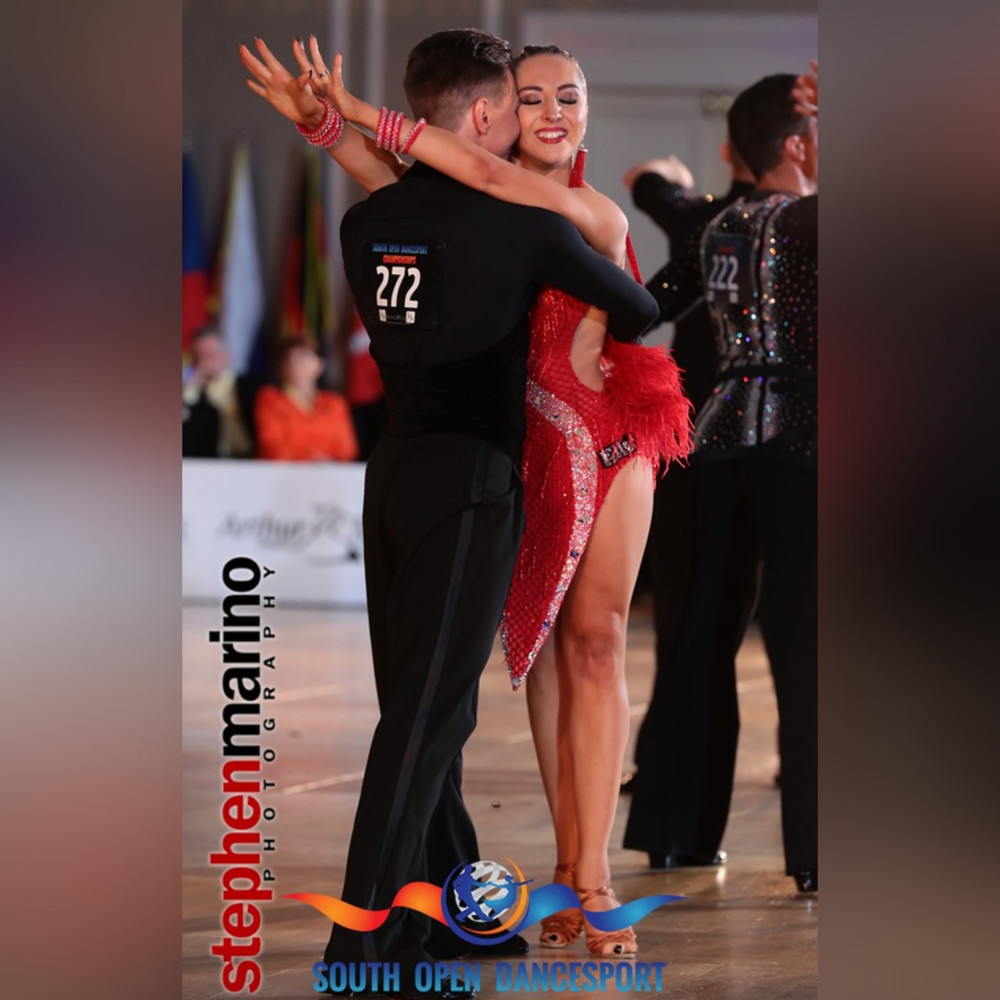
Argentine Tango in Ocoee, Florida
Key elements of Argentine tango include intricate footwork, dramatic leg sweeps, and fluid movements characterized by pauses and sudden changes in direction. The dance is often performed in close embrace, with the partners maintaining a deep connection through their chests and upper bodies while executing intricate footwork and embellishments.
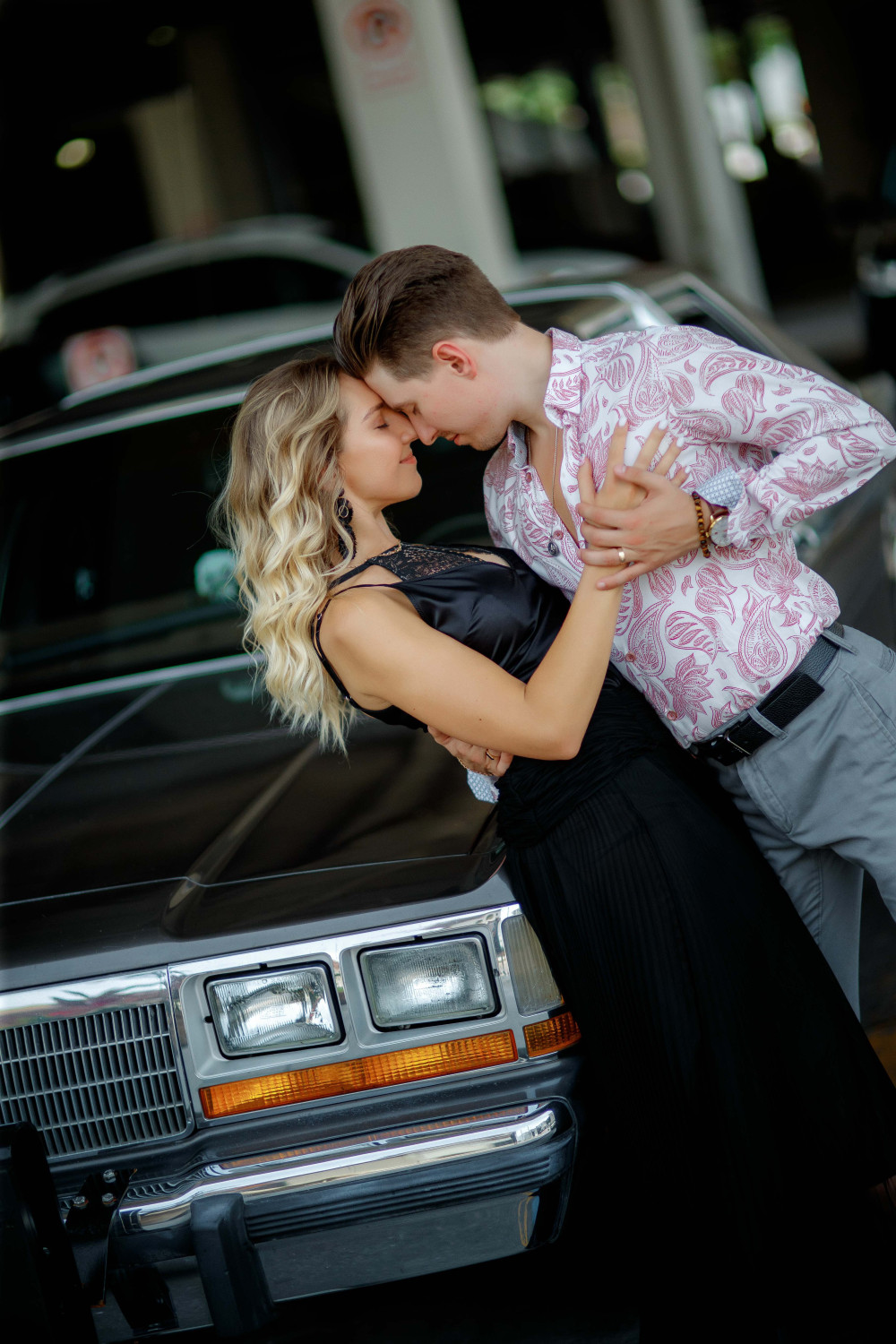
Bachata in Ocoee, Florida
Bachata is characterized by sensual movements, close partner connection, and intricate footwork. It is typically danced in a close embrace, with partners maintaining contact through their upper bodies while executing a variety of turns, dips, and syncopated steps.
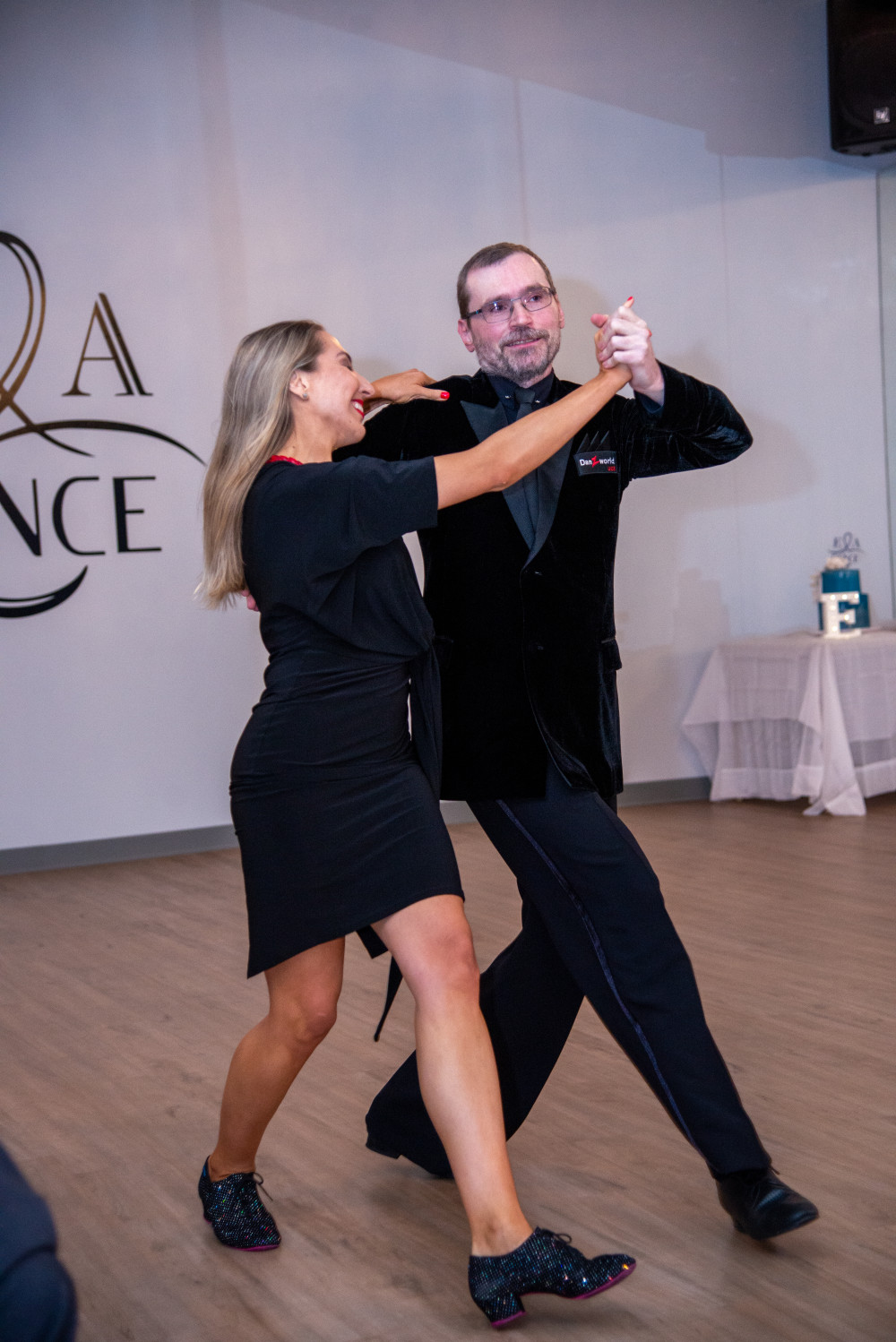
Ballroom Dancing in Ocoee, Florida
Ballroom dance is an elegant and graceful partner dance style that originated in the 19th century and remains popular worldwide. It encompasses a variety of dances, including the waltz, foxtrot, tango, and cha-cha, each with its unique rhythms and movements.
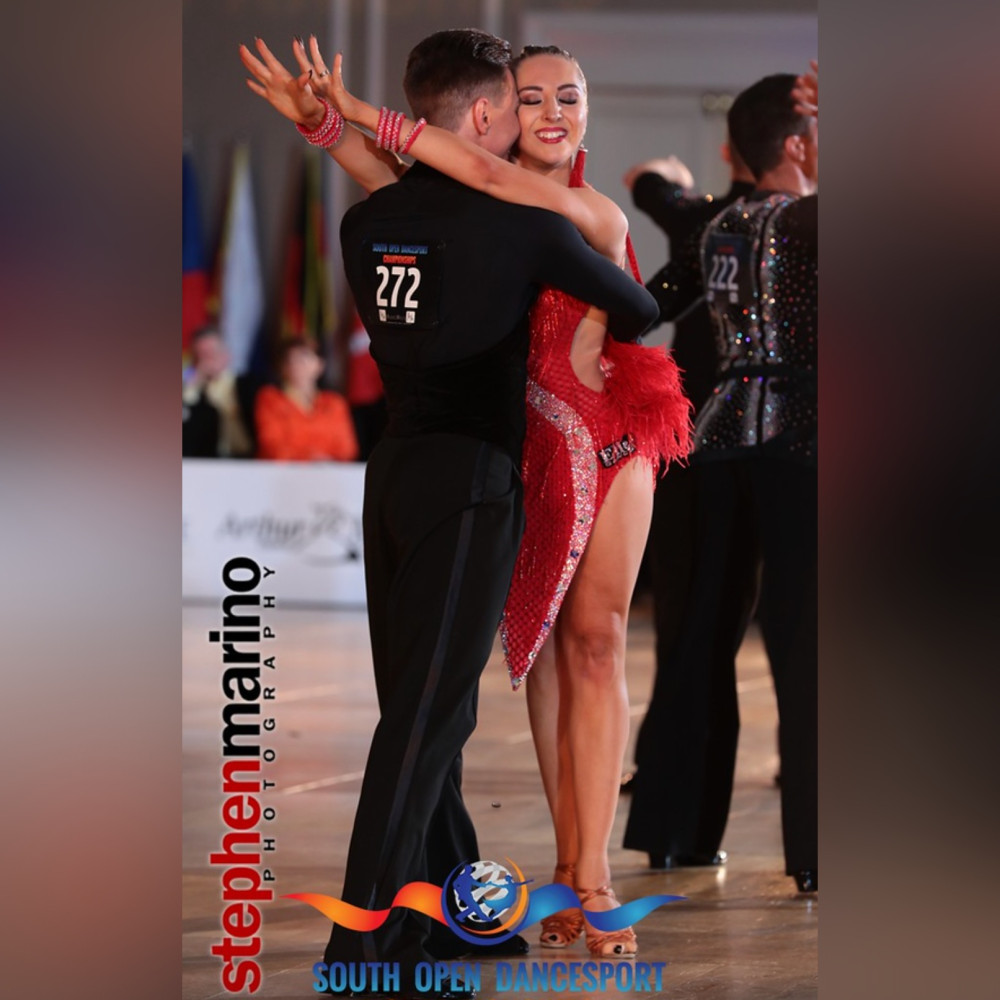
Bolero in Ocoee, Florida
The Bolero dance is a passionate and rhythmic Spanish dance characterized by slow, dramatic movements, intense expressions, and close physical contact between partners. Originating in Spain in the late 18th century, it features a distinctive slow tempo and is often performed to music with a bolero rhythm pattern.
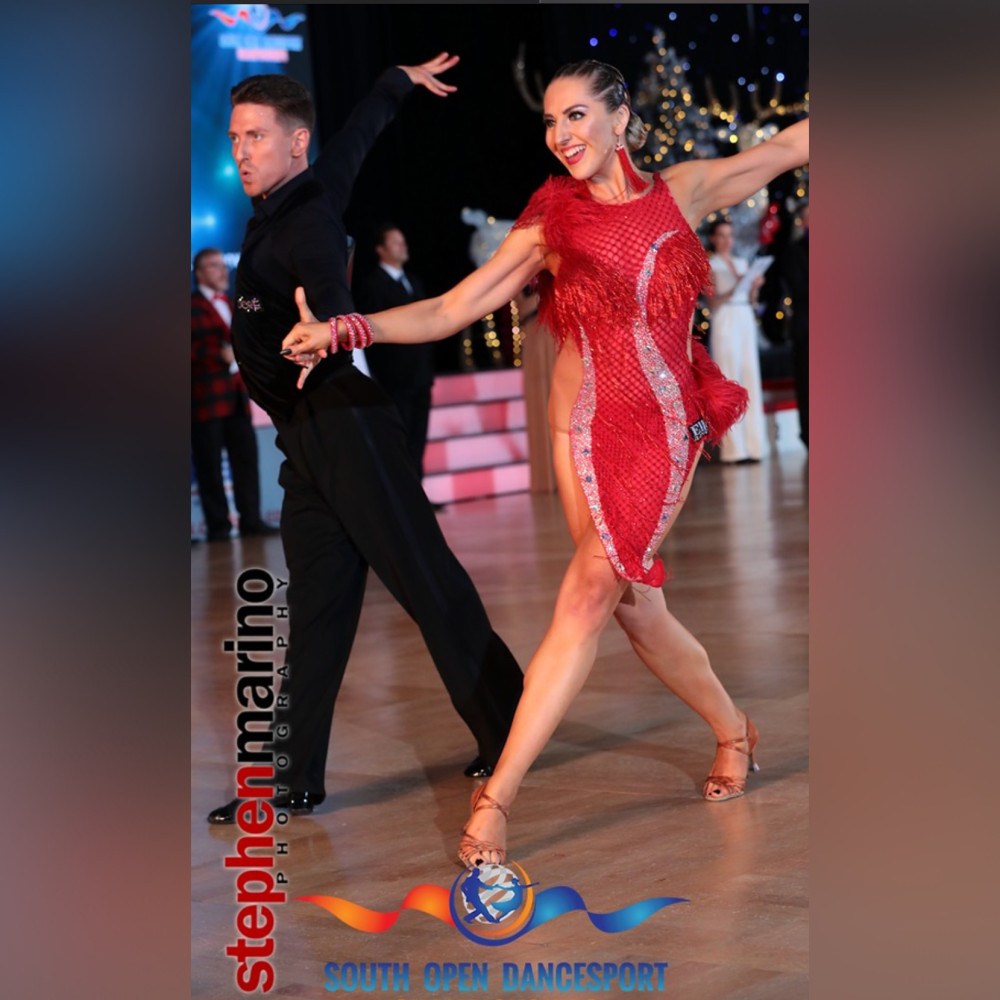
Cha-Cha in Ocoee, Florida
Cha-Cha includes various turns, spins, and syncopated movements, making it dynamic and exciting to watch and dance. Partners maintain a close connection throughout the dance, often holding each other in a traditional ballroom dance frame.
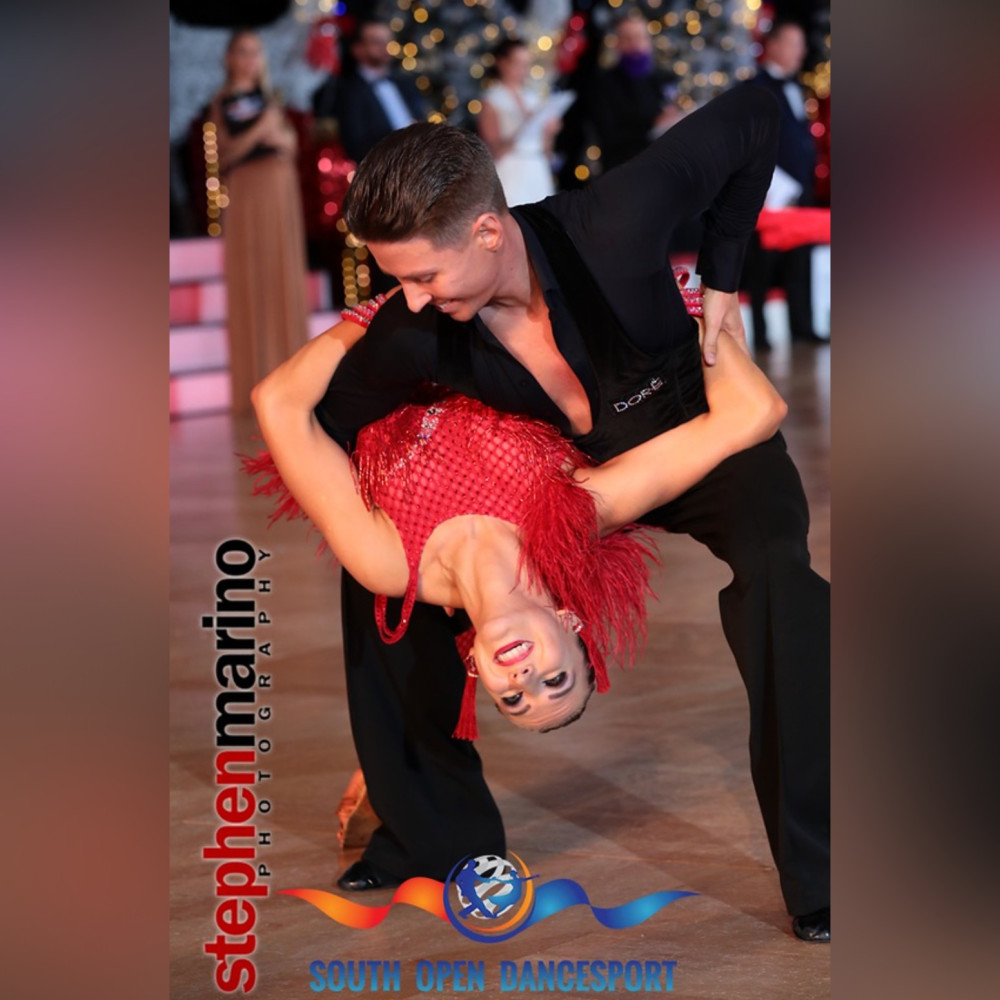
Competitive Ballroom in Ocoee, Florida
Competitive ballroom dancing is a captivating blend of artistry, athleticism, and precision. Dancers gracefully glide across the floor in perfect synchronization, showcasing their mastery of intricate choreography and precise footwork.

Contemporary in Ocoee, Florida
Contemporary dance is characterized by its versatility, fluidity, and expressiveness. Dancers often explore new movement vocabulary and push the boundaries of traditional techniques, allowing for a wide range of expression and creativity. Unlike more structured forms of dance like ballet, contemporary dance encourages individuality and personal interpretation.
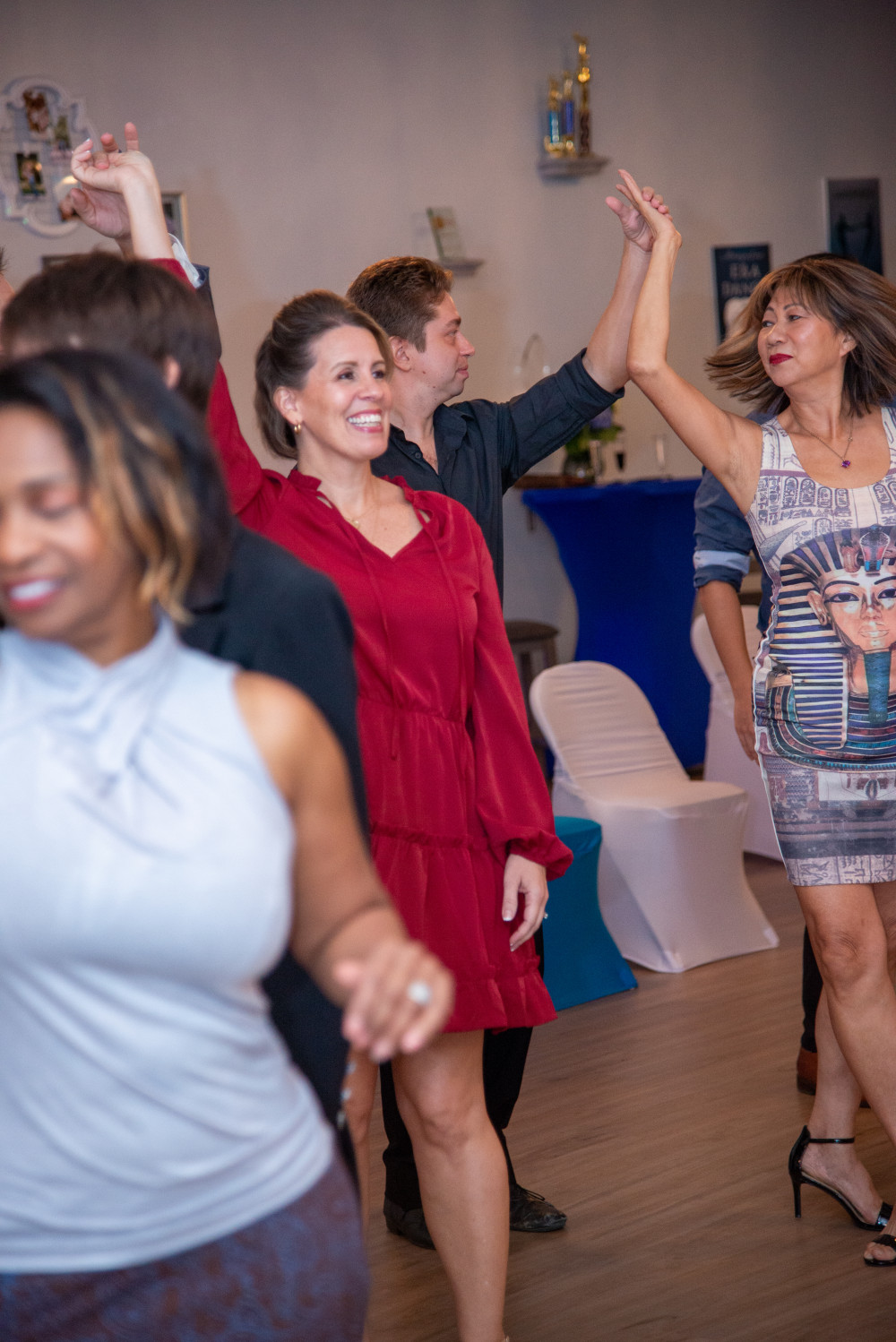
Country Two Step in Ocoee, Florida
Country two-step, also known as "two-step," is indeed a beloved partner dance style that emerged from the vibrant country music culture of the United States. With its roots deeply embedded in American traditions, this dance form has gained widespread popularity across various regions.
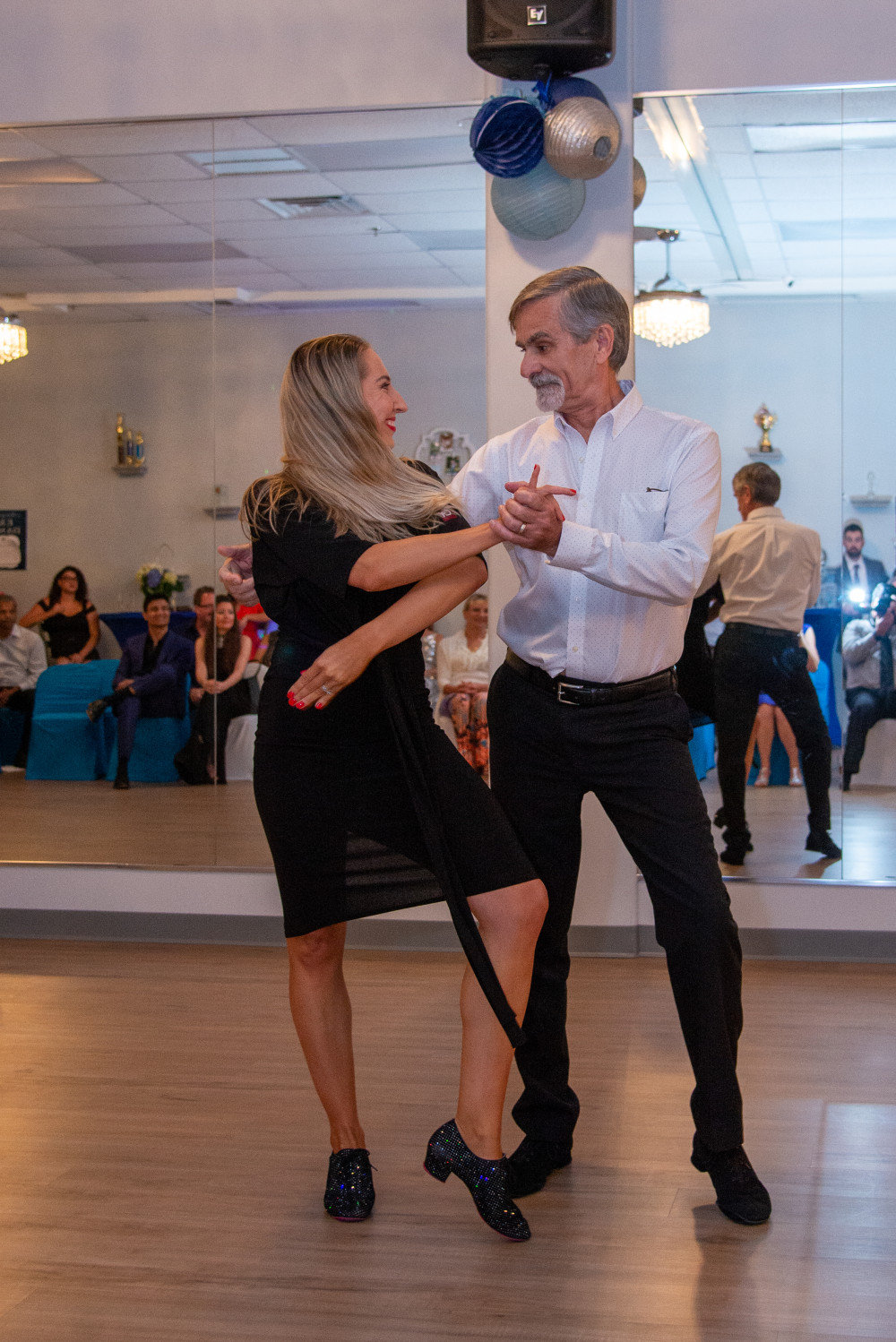
Couple Dancing in Ocoee, Florida
Couple dancing is a captivating form of dance where two individuals move together in harmony as partners. From elegant ballroom dances like the waltz to passionate Latin rhythms like salsa, partners share a connection on the dance floor, with one leading and the other following.
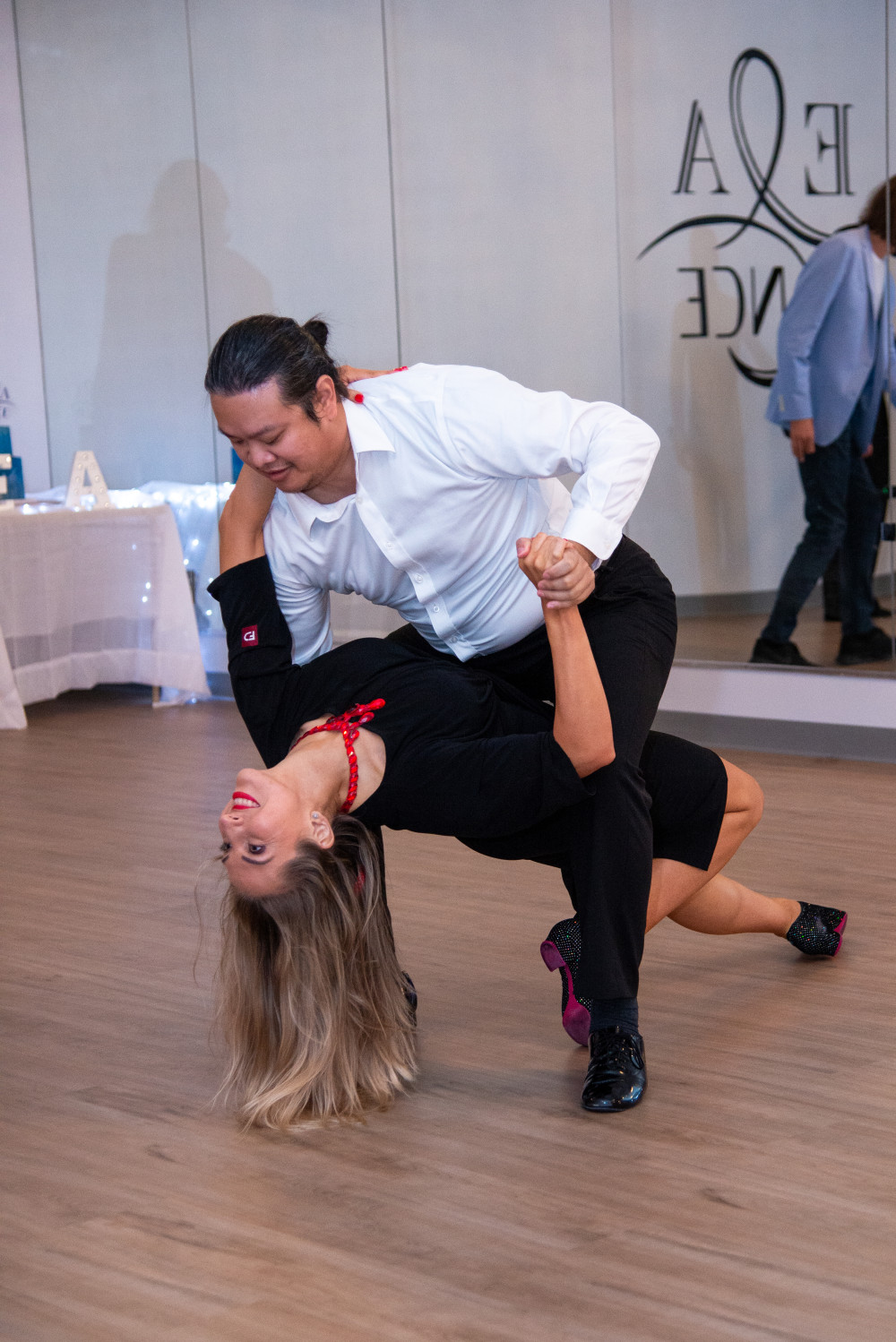
Custom Choreography in Ocoee, Florida
At E&A Dance, our custom choreography service offers personalized dance routines tailored to your specific needs and preferences. Whether you're preparing for a special event, competition, or performance, our experienced choreographers will work closely with you to create a unique and captivating dance piece. From concept development to final performance, we'll bring your vision to life with precision, creativity, and style.
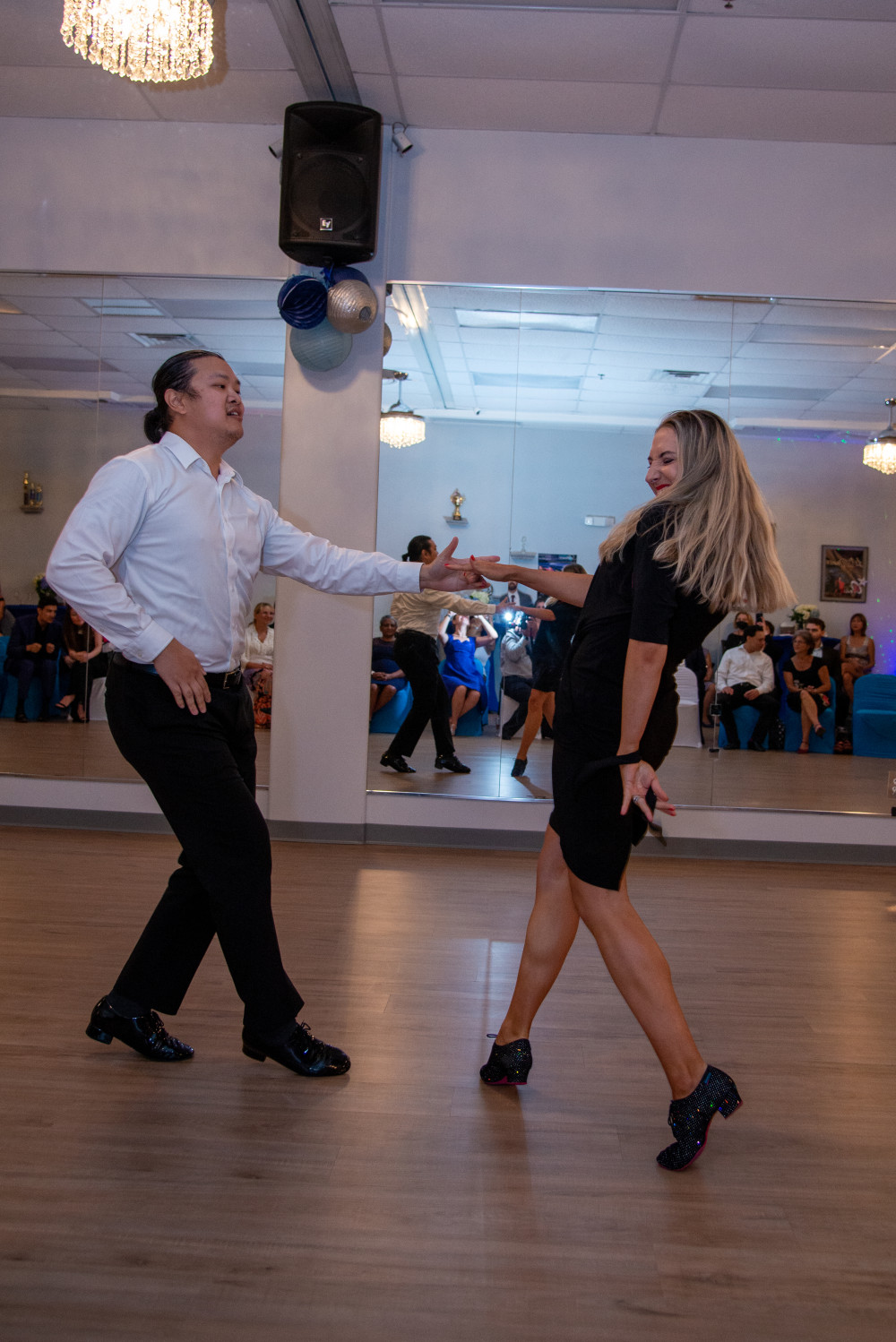
East Coast Swing in Ocoee, Florida
East Coast Swing is a lively and energetic form of social dance that originated in the United States in the 1940s. It belongs to the family of swing dances and is known for its upbeat tempo, fun movements, and energetic spins and turns.
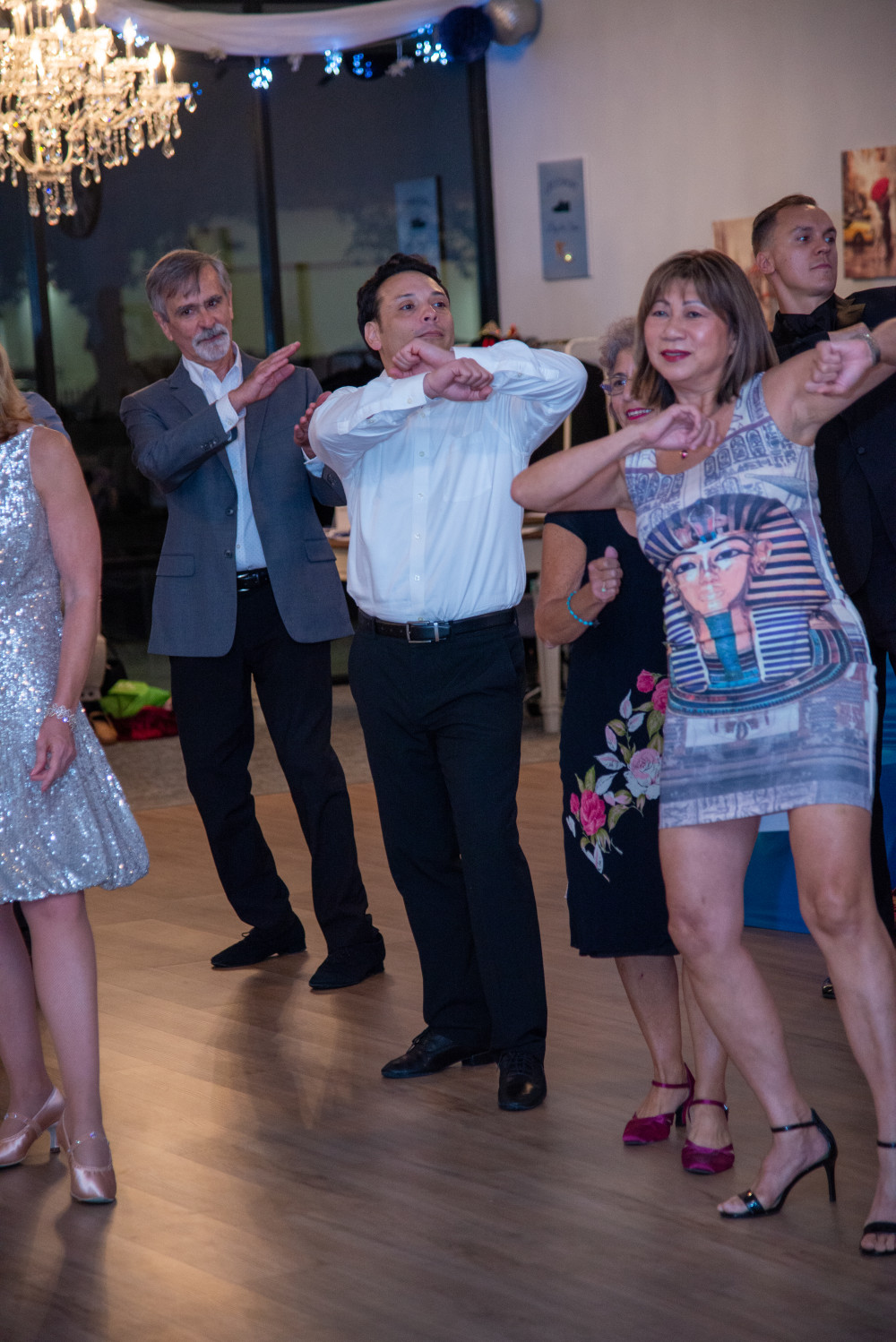
Flash Mob Choreography in Ocoee, Florida
A "flash mob" typically involves a group of people who assemble suddenly in a public place, perform a brief and seemingly spontaneous act (often a dance), and then disperse just as quickly as they appeared.
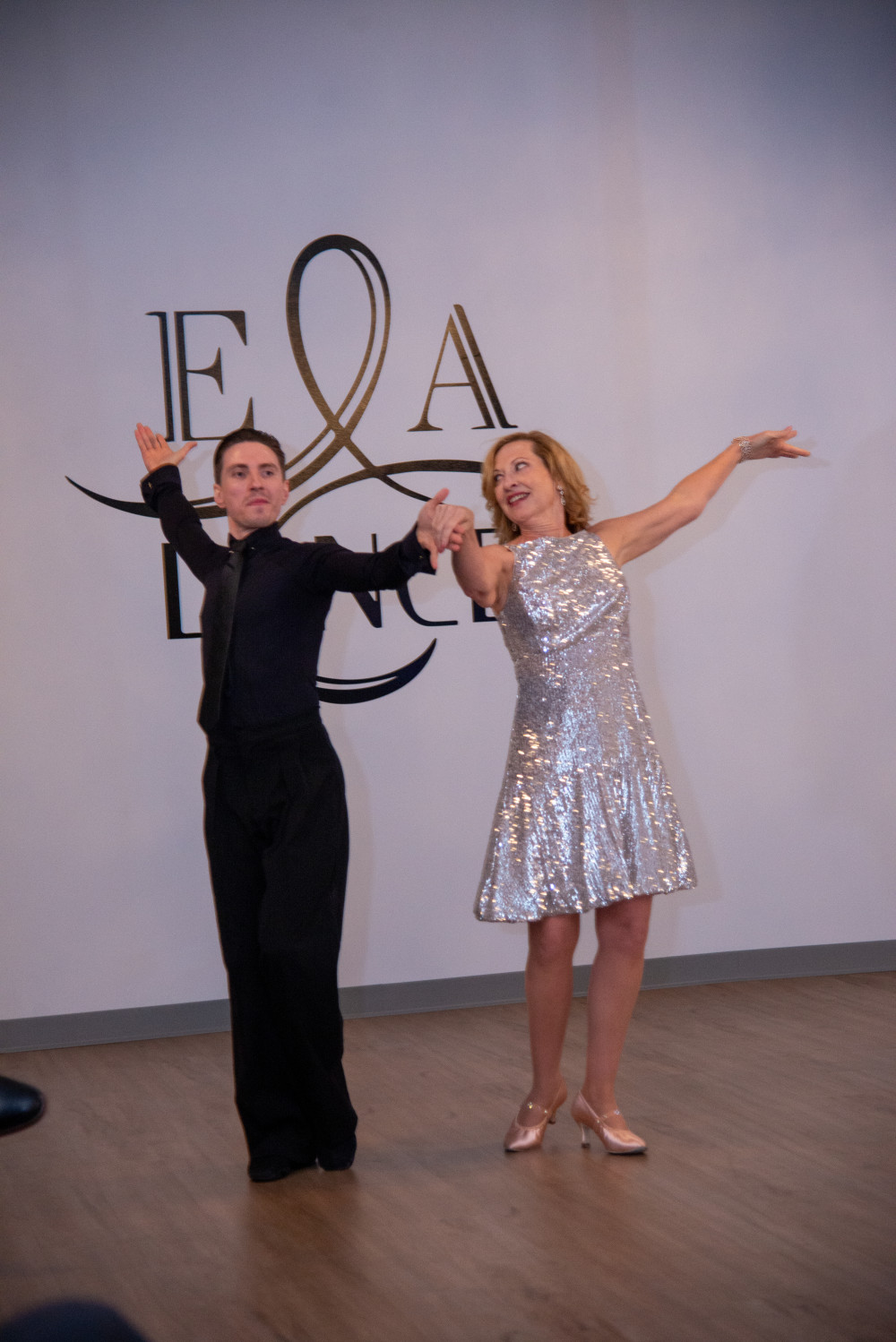
Foxtrot in Ocoee, Florida
The foxtrot is an elegant ballroom dance characterized by smooth, gliding movements and danced to music in 4/4 time. Partners maintain a close connection and move gracefully around the dance floor in a progressive manner. With its timeless charm and versatility, the foxtrot remains a beloved dance style enjoyed worldwide.
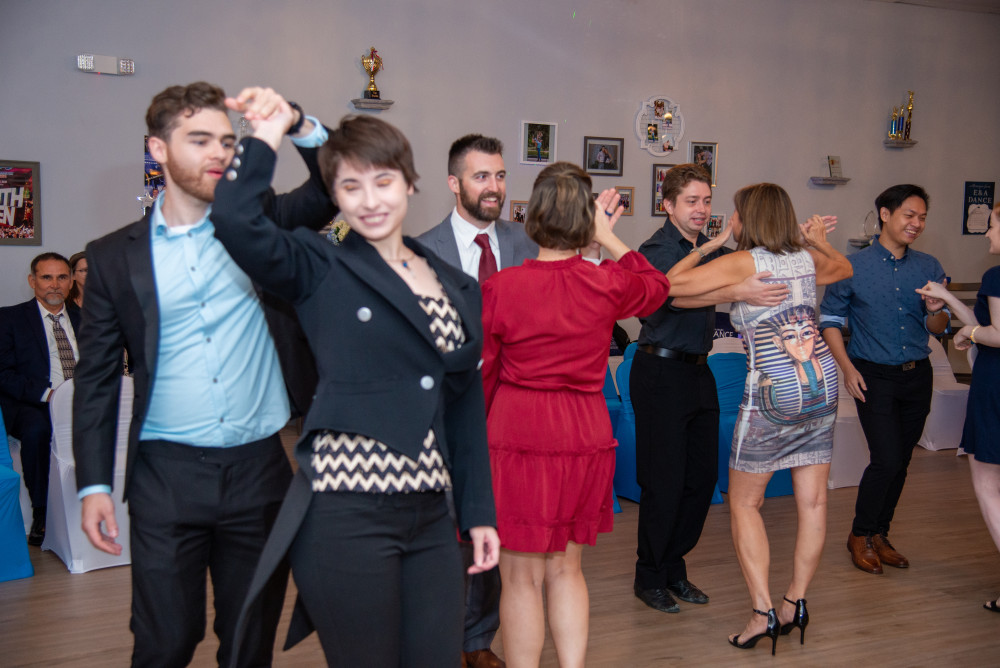
Hustle in Ocoee, Florida
The Hustle is a vibrant partner dance originating from the 1970s disco era. It features smooth, flowing movements and upbeat rhythms, making it ideal for dancing to disco and funk music.
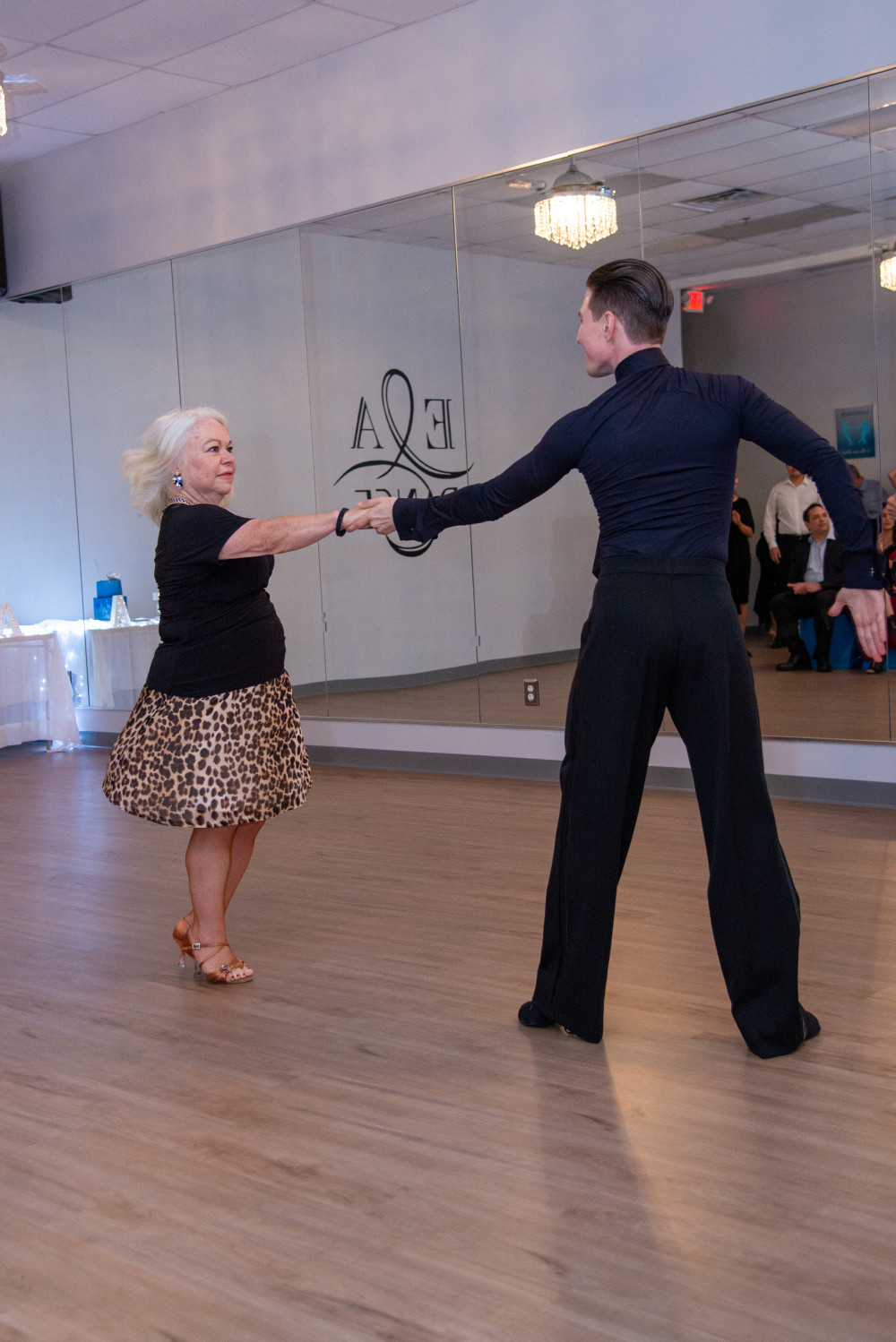
Jive in Ocoee, Florida
Jive is a lively and energetic dance style with fast-paced footwork, bouncy movements, and syncopated rhythms. Originating from swing dances, it's danced to upbeat music like rock and roll or rhythm and blues. Partners maintain a close connection in a closed frame, executing kicks, flicks, and triple steps. Jive is popular in both competitive ballroom settings and social dance scenes, known for its fun and dynamic nature.
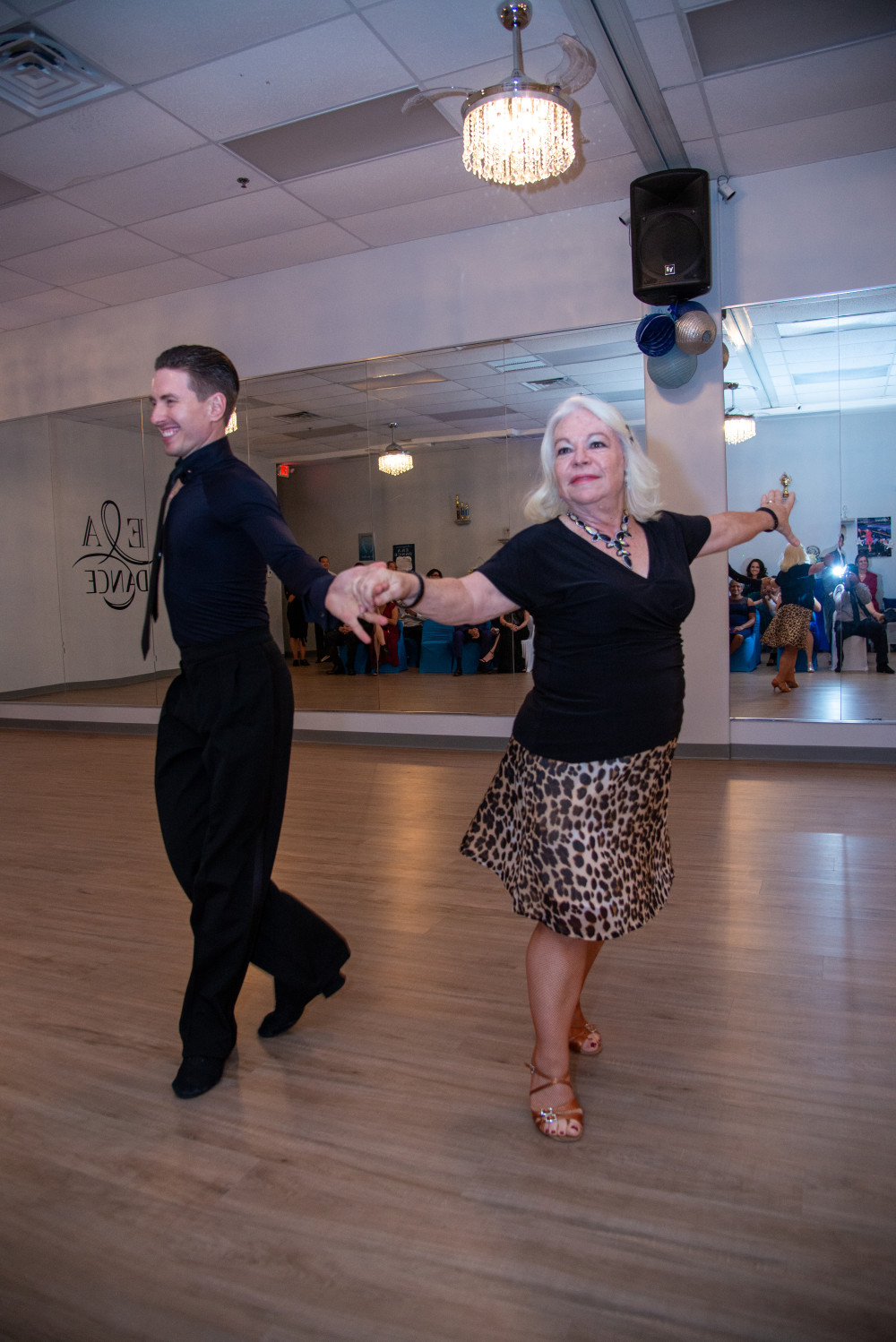
Latin Dancing in Ocoee, Florida
Latin dancing encompasses a variety of passionate and rhythmic dance styles originating from Latin America and the Caribbean. From the lively steps of salsa to the sensual movements of bachata, Latin dancing is characterized by its vibrant music, energetic footwork, and expressive flair.
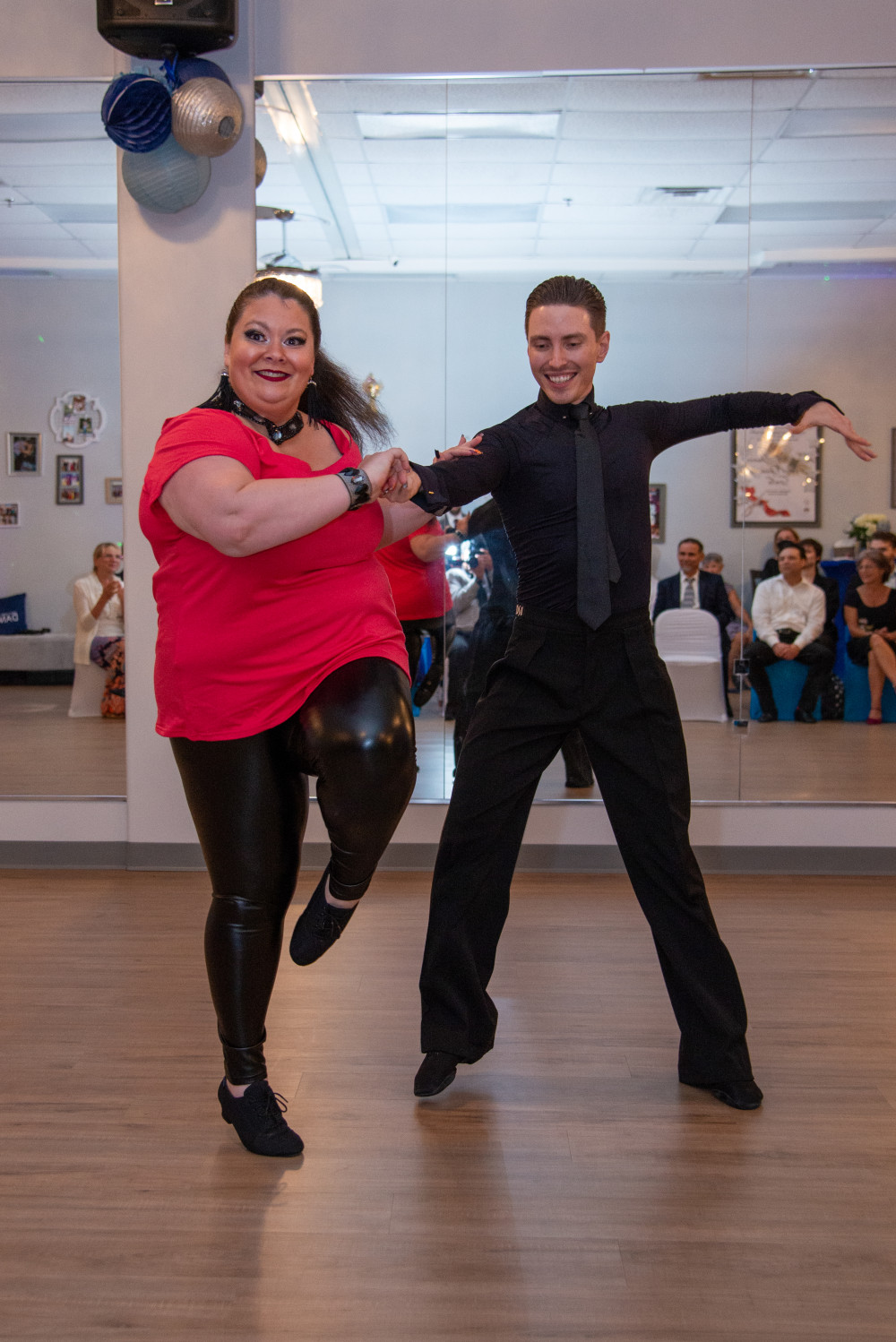
Lindy Hop in Ocoee, Florida
Lindy Hop is a dynamic partner dance originating from Harlem in the late 1920s. It's characterized by energetic movements, improvisation, and connection between partners. Danced to swing music, Lindy Hop features signature moves like the swingout and emphasizes musicality and creativity. With its lively style and rich cultural history, Lindy Hop remains popular in swing dance communities worldwide.
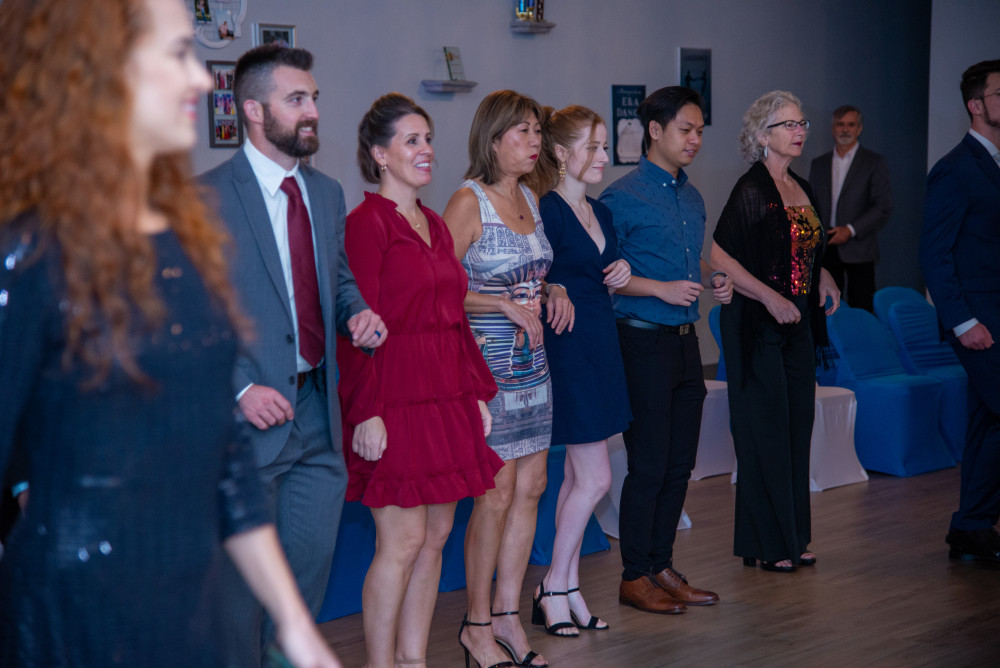
Line Dancing in Ocoee, Florida
Line dancing is a style of dance where individuals perform choreographed steps in unison, typically arranged in lines or rows without the need for a partner. It's characterized by repetitive sequences of steps set to specific music, often enjoyed in social settings like dance halls, clubs, or gatherings.
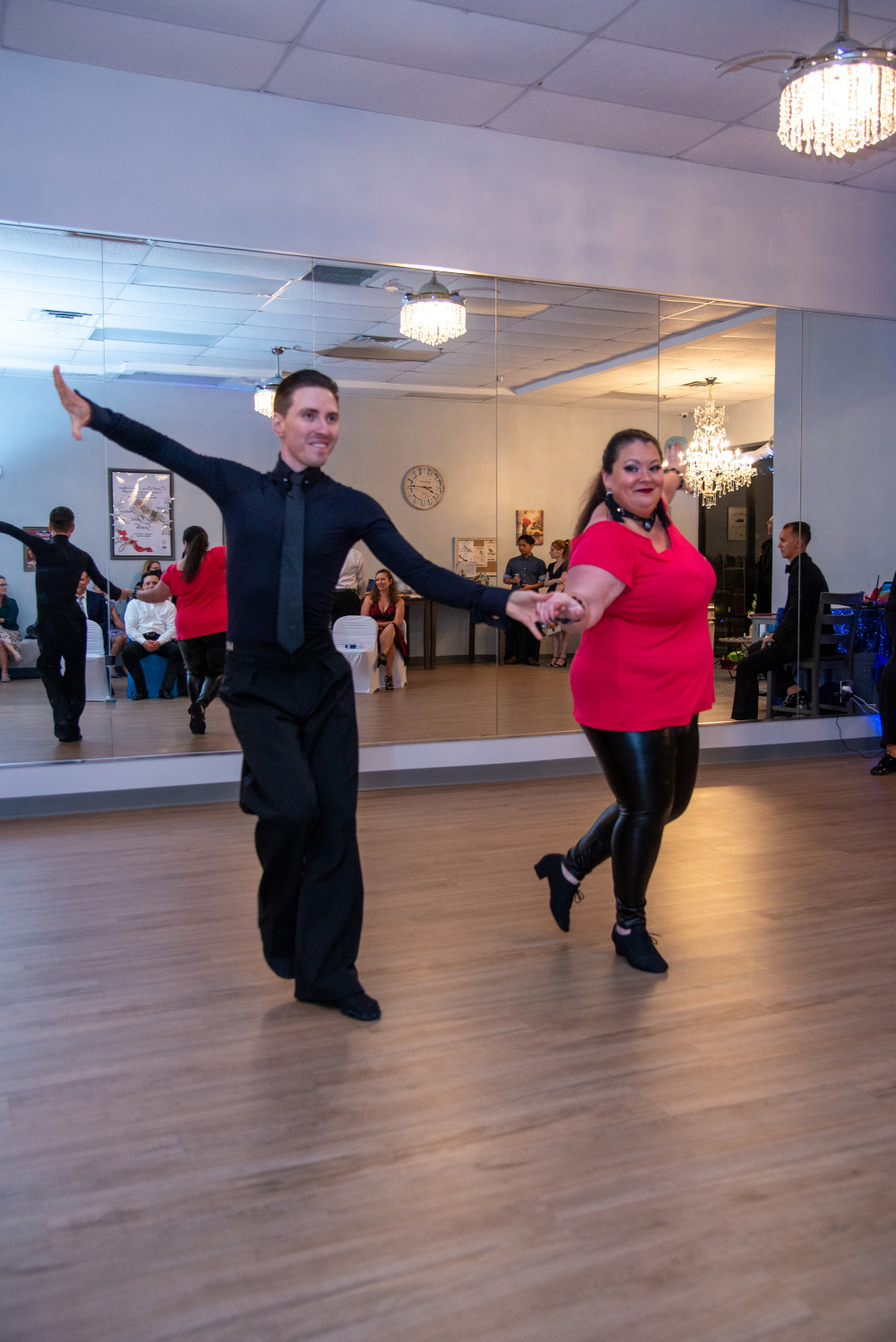
Mambo in Ocoee, Florida
Mambo is a lively Latin dance originating from Cuba in the late 1930s. It features energetic footwork, hip movements, and syncopated rhythms. Danced in close embrace, it incorporates elements of Afro-Cuban dances with jazz influences. Mambo is known for its sensual hip action and cross-body lead patterns. It's performed socially and competitively, with a focus on improvisation and expression.
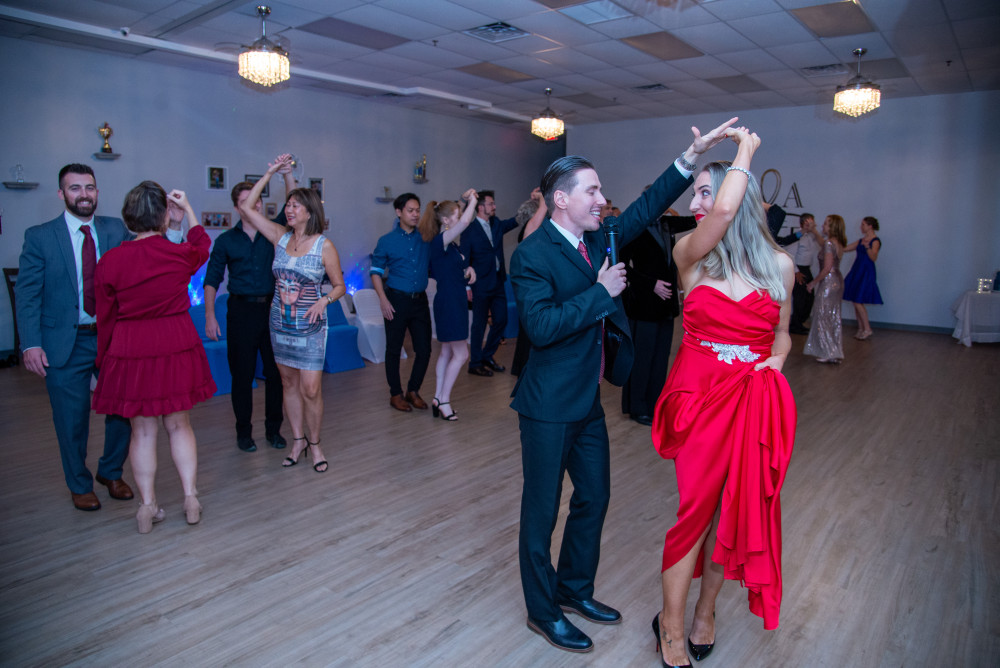
Merengue in Ocoee, Florida
Merengue is a lively dance style originating from the Dominican Republic, characterized by its energetic music and playful movements. Dancers hold each other closely as they move to the beat, performing quick side-to-side steps and hip movements.
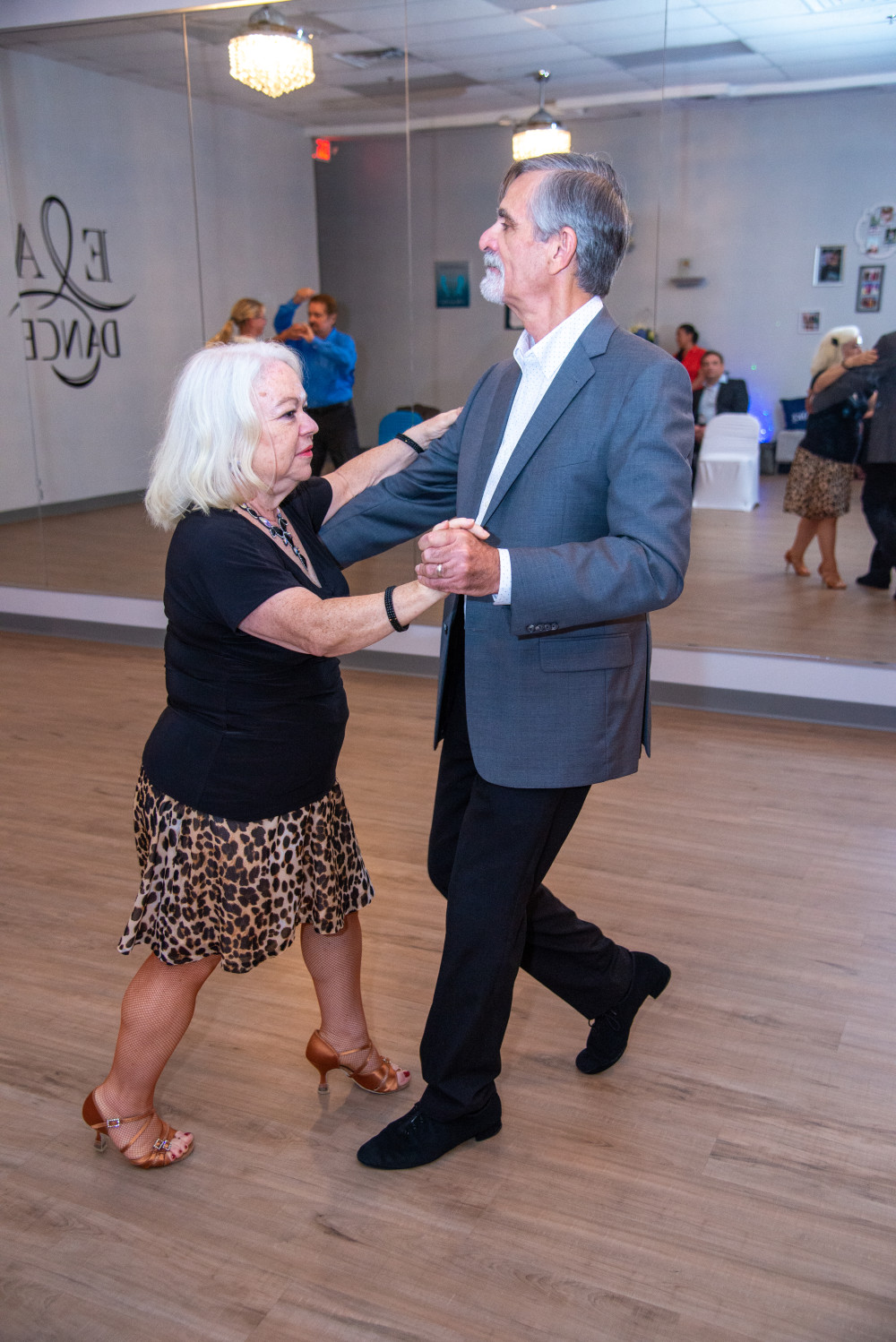
Nightclub Two Step in Ocoee, Florida
The Nightclub Two-Step is a smooth partner dance characterized by its slow tempo and romantic feel. Developed in the 1960s in the United States, it's danced in a circular or slot formation and features simple walking steps, side steps, and turns.
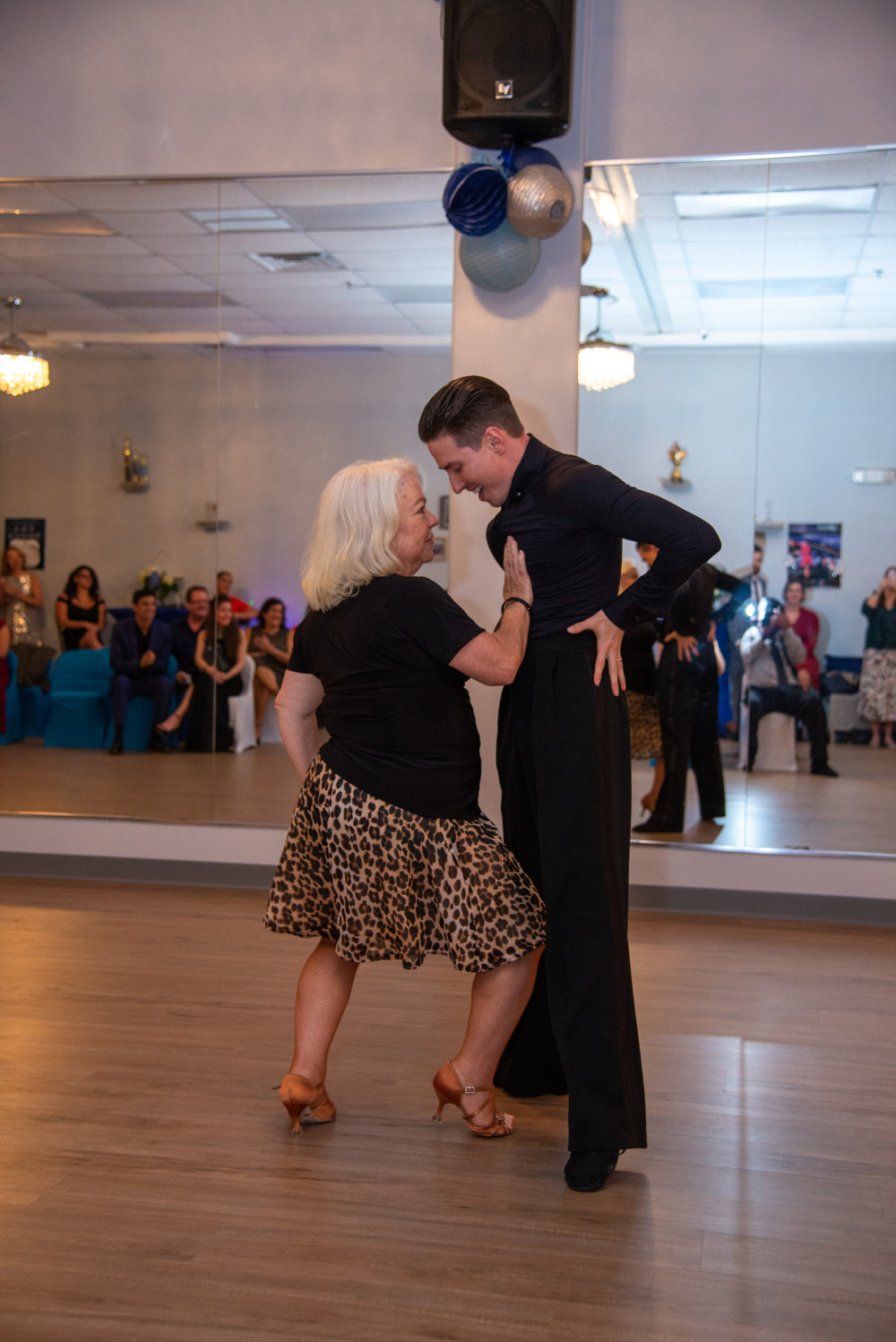
Paso Doble in Ocoee, Florida
Paso Doble is a passionate ballroom dance style inspired by the Spanish bullfight. It features dramatic, staccato movements mimicking the matador and cape. Danced to march-like music, it emphasizes posture, poise, and flamenco elements. Paso Doble is popular in competitions for its intensity and theatricality.
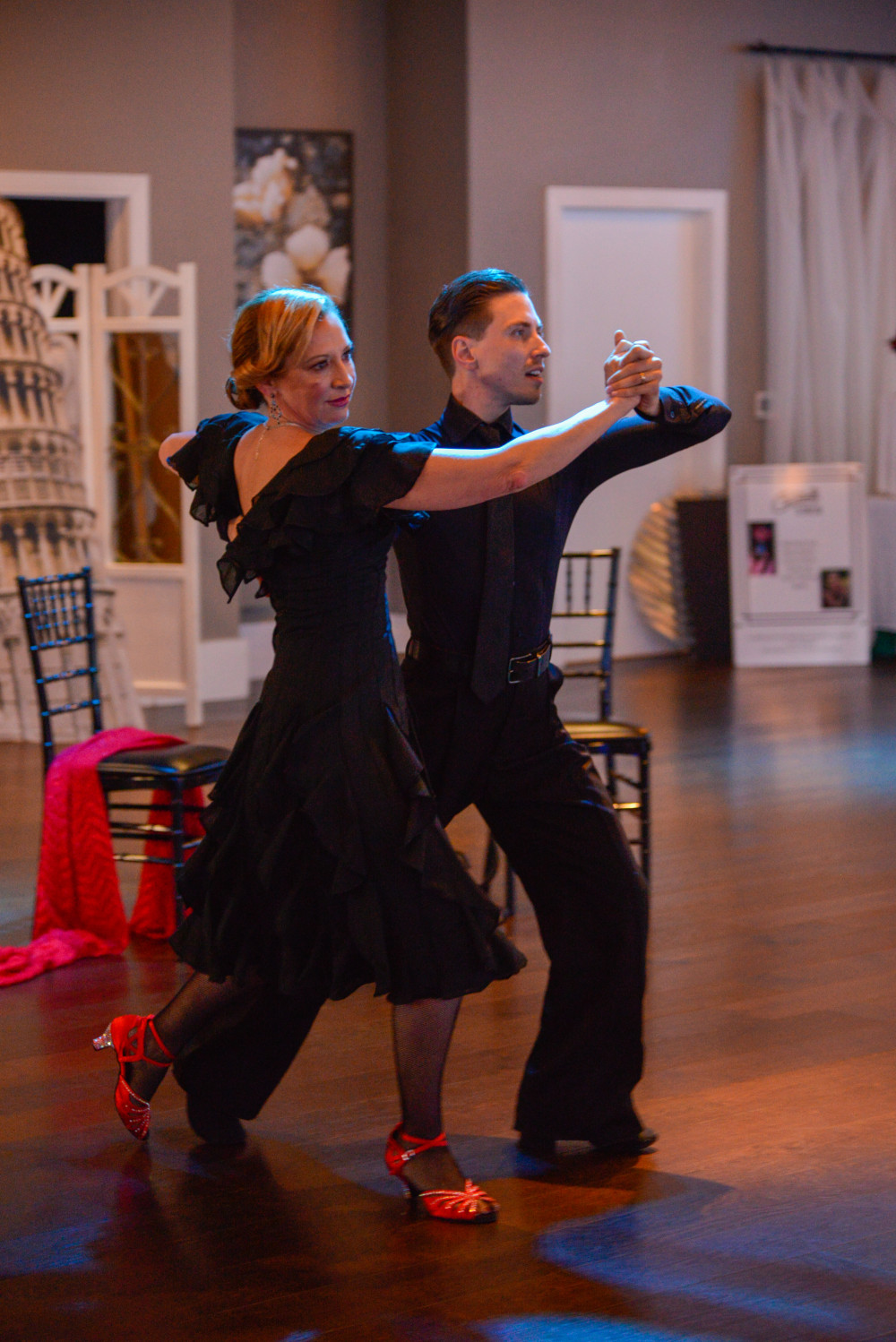
Quickstep in Ocoee, Florida
Quickstep is a lively ballroom dance known for its fast pace, continuous movement, and upbeat music. Dancers showcase quick steps, hops, and syncopated footwork as they travel across the dance floor. With its energetic style and joyful expression, Quickstep is a popular choice for ballroom dance competitions and social dancing alike.
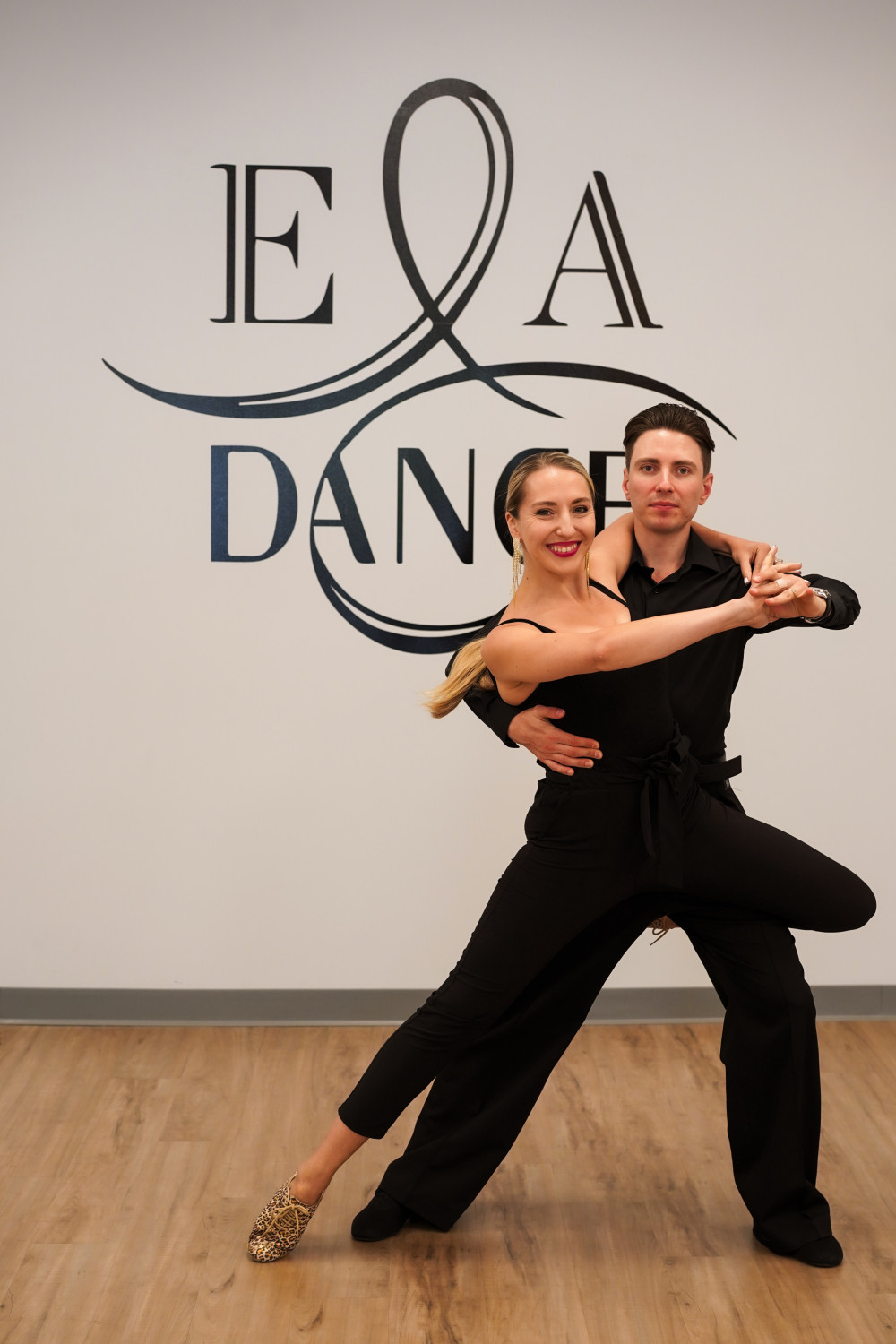
Rumba in Ocoee, Florida
Rumba is a sensual and romantic Latin dance originating from Cuba. It features slow, expressive movements with a focus on hip motion. Danced to music with a slow tempo and 4/4 time signature, rumba is characterized by intimate connection between partners and emotive storytelling through movement.
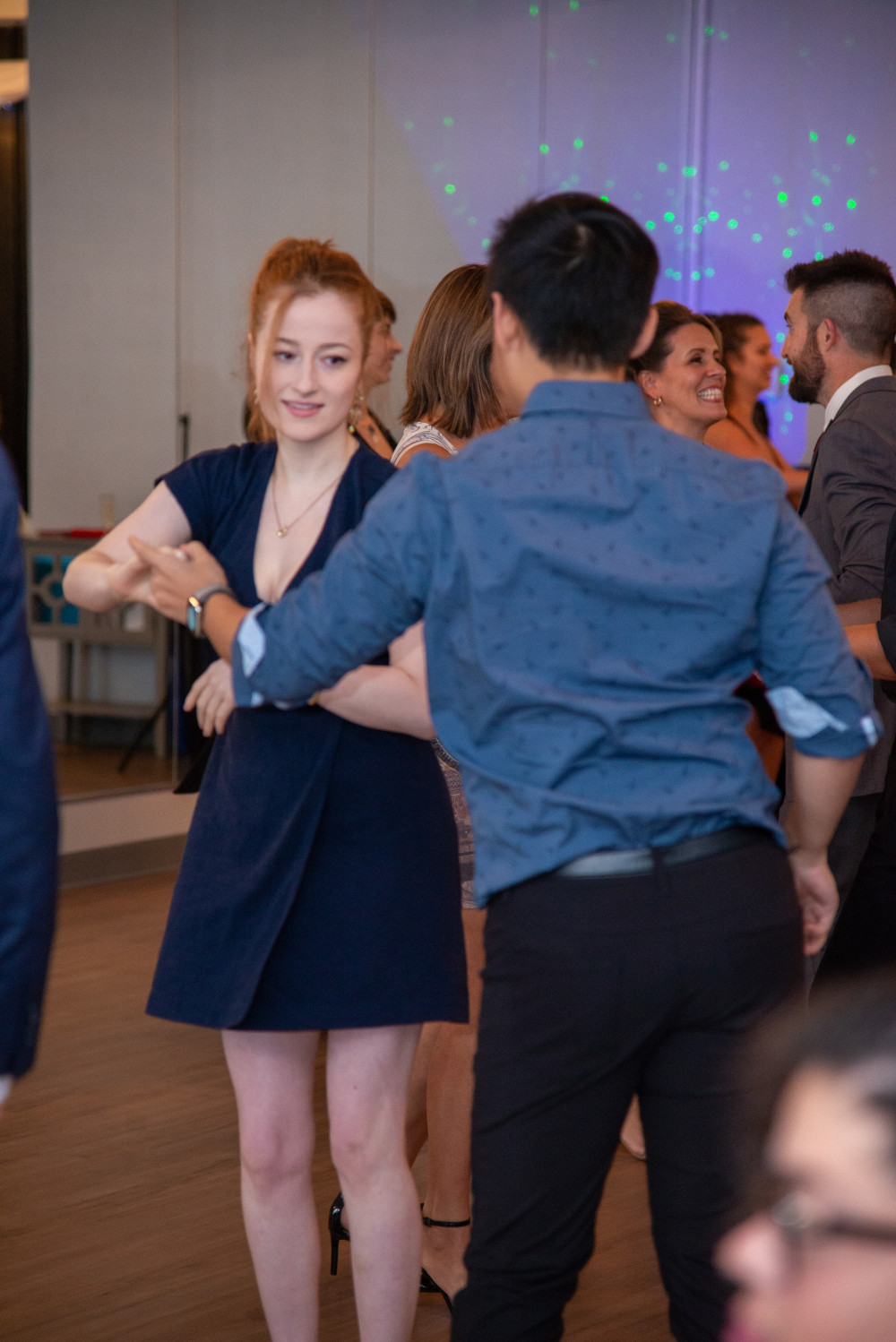
Salsa in Ocoee, Florida
Salsa is a lively and rhythmic partner dance style originating from the Caribbean, characterized by its infectious music and energetic movements. Partners dance closely together, moving in sync with quick-quick-slow steps and incorporating playful hip and arm movements.
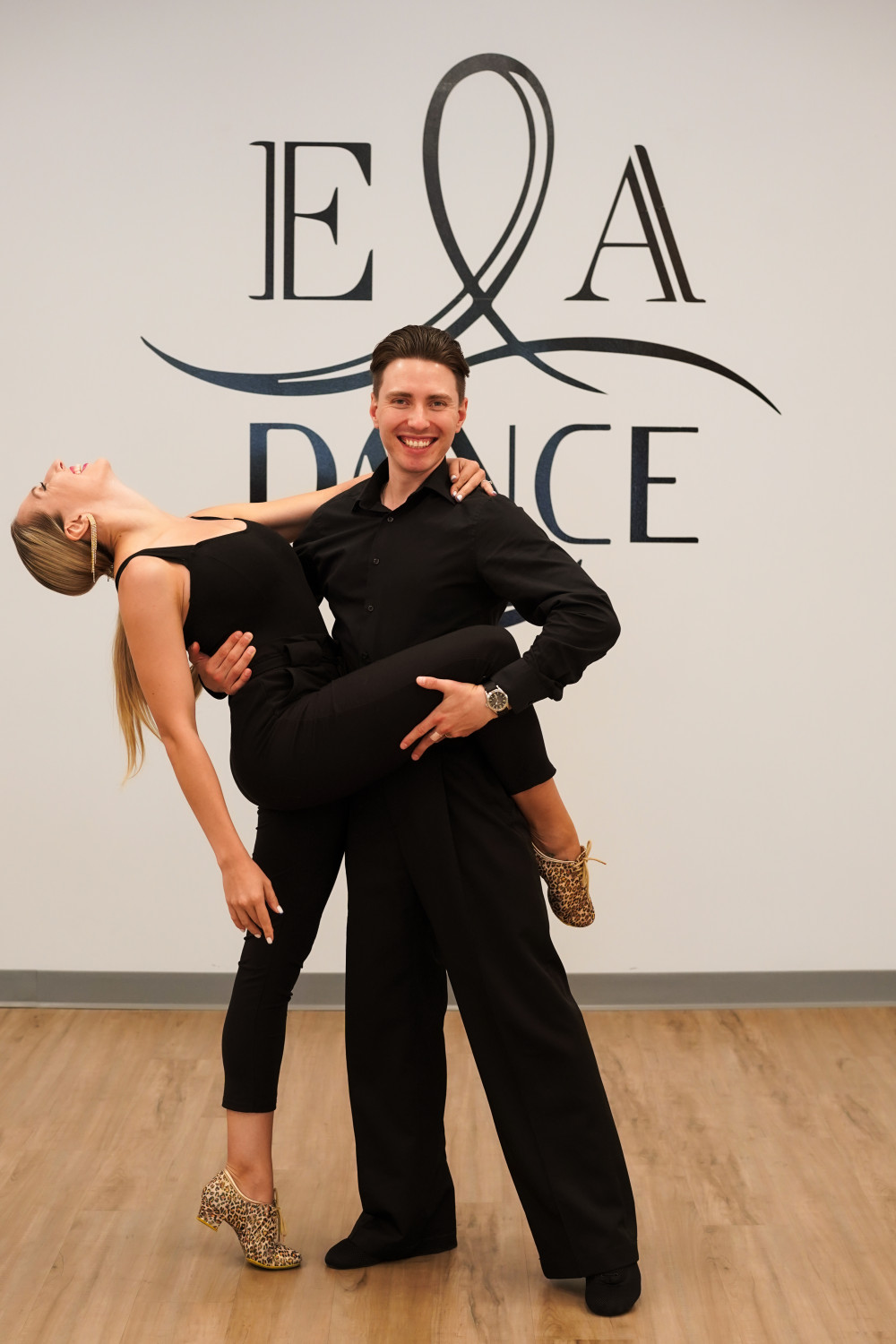
Salsa on Two in Ocoee, Florida
Salsa on two, also known as New York style salsa, is a variant of salsa dancing where the basic step starts on the second beat of the music. It emphasizes musicality, syncopated footwork, and partner connection, offering dancers a dynamic and rhythmic approach to salsa.
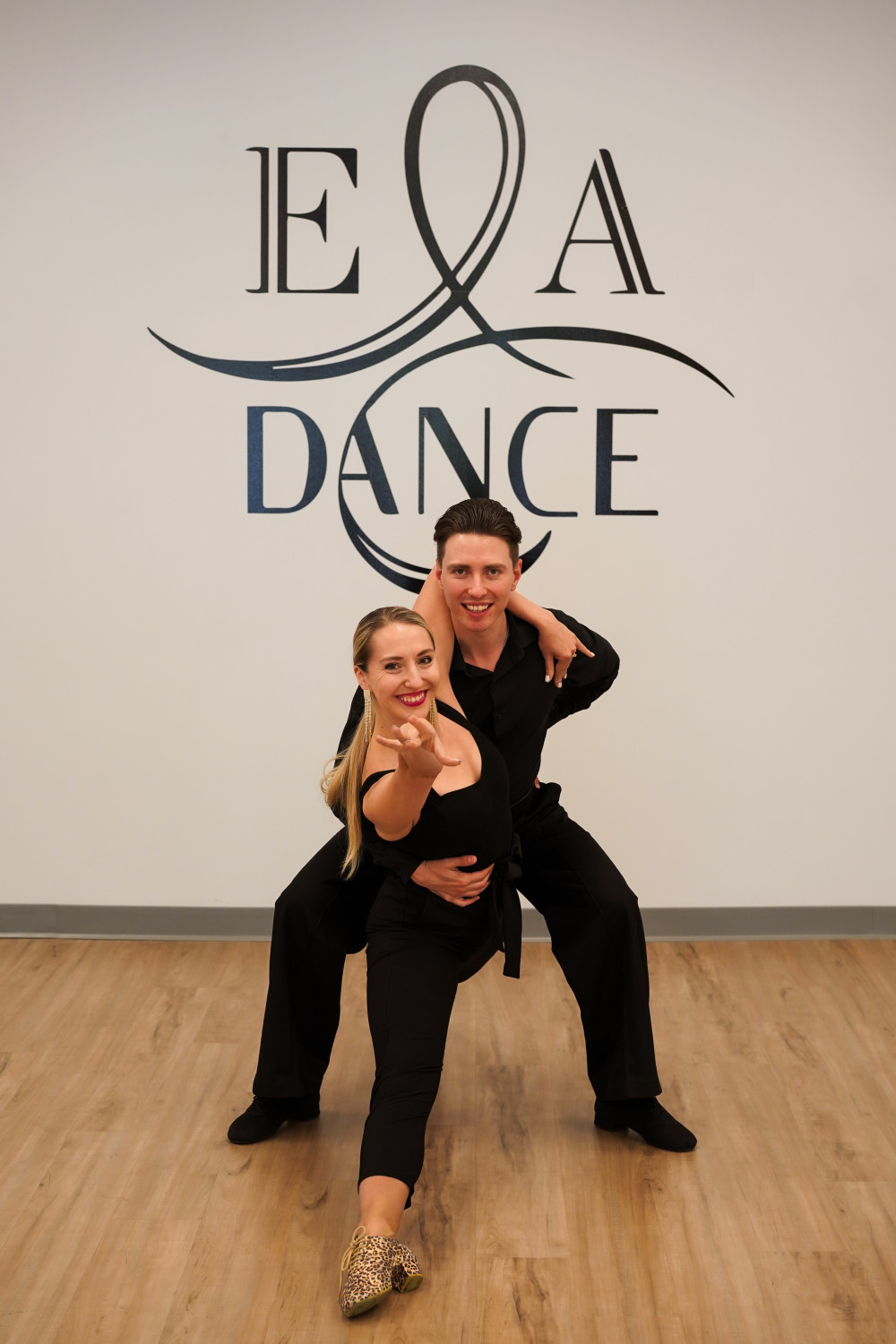
Samba in Ocoee, Florida
Samba is a lively Brazilian dance characterized by its energetic hip movements and fast-paced rhythm. Rooted in Brazilian culture, it is often associated with vibrant festivals like Carnival. Samba features rhythmic footwork and colorful costumes, offering a dynamic and joyful expression of Brazilian music and dance.
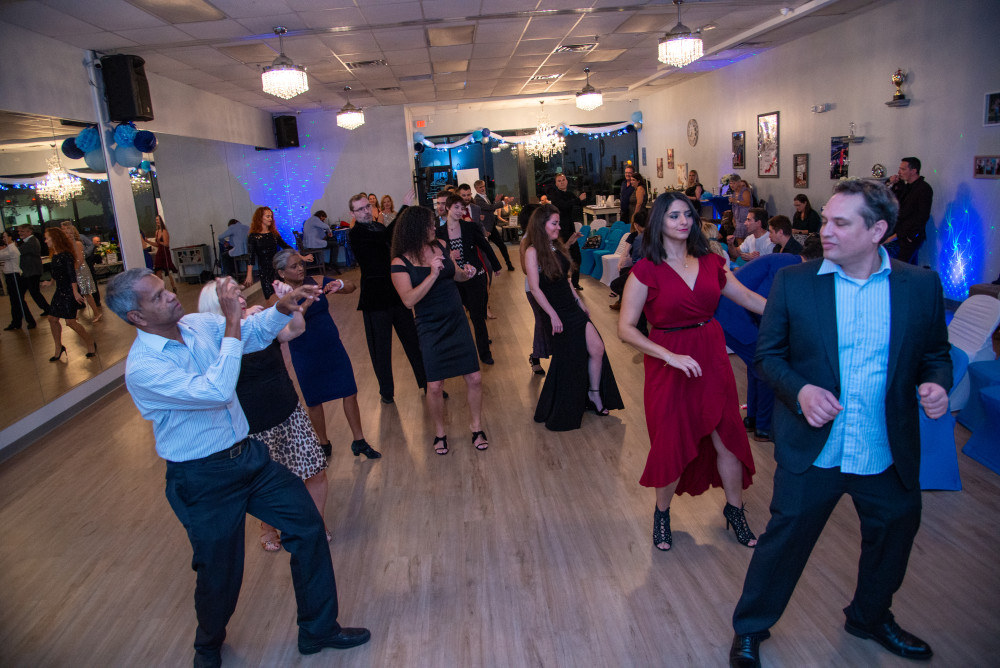
Social Dancing in Ocoee, Florida
Social dancing involves partner dances performed in informal settings like dance clubs, parties, and weddings. It includes various styles such as salsa, swing, tango, and bachata, fostering connection, communication, and community among dancers of all ages and backgrounds.

Swing in Ocoee, Florida
Swing dance is a lively and energetic form of partnered dance that originated in America during the swing era. It's characterized by its upbeat rhythm, syncopated footwork, and strong emphasis on improvisation and partner connection.
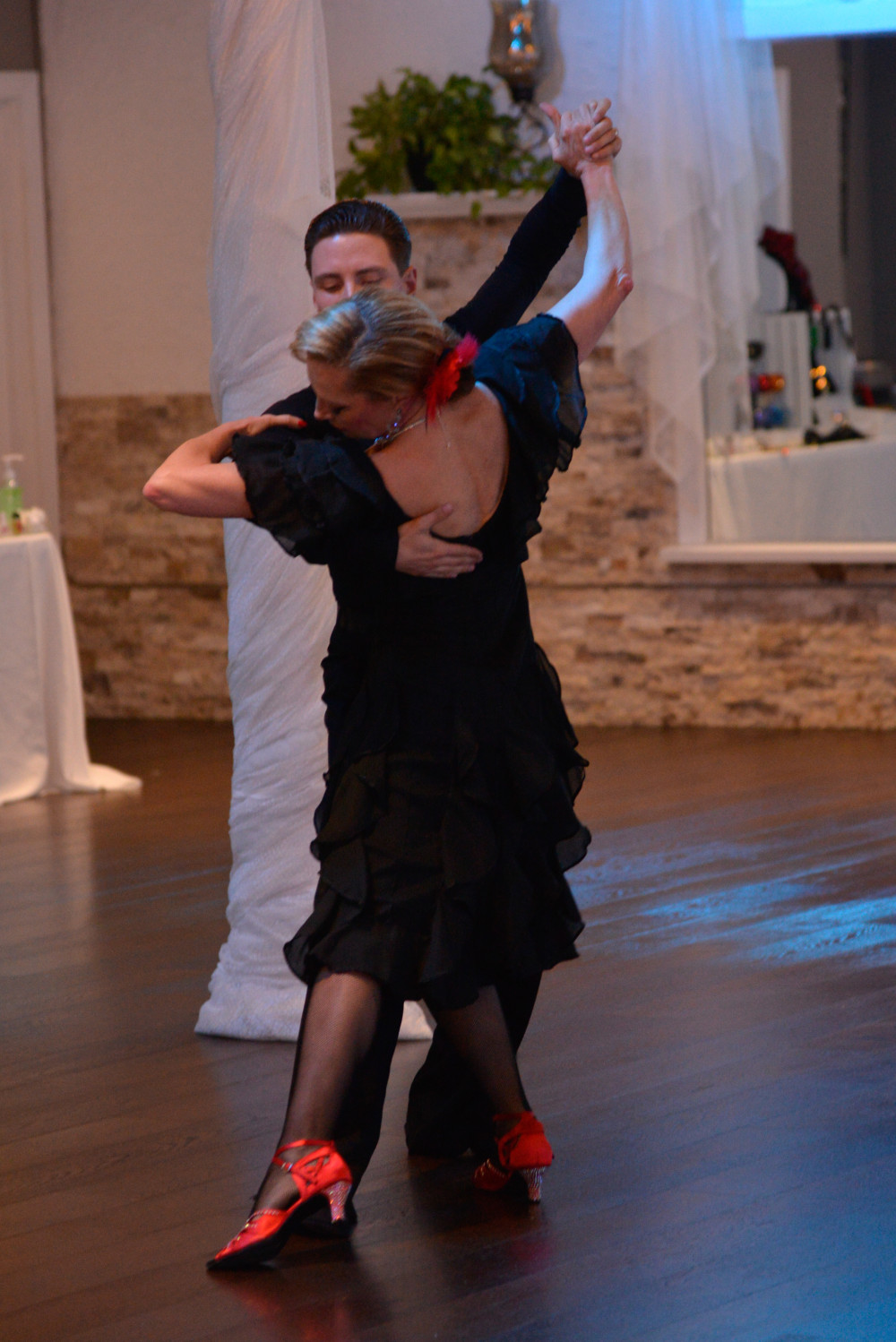
Tango in Ocoee, Florida
Tango is a passionate and dramatic dance originating from Buenos Aires, Argentina. It features close embrace, intricate footwork, and intense emotional expression between partners. Tango's music is characterized by melancholic melodies and rhythmic patterns, contributing to its unique atmosphere and cultural significance.
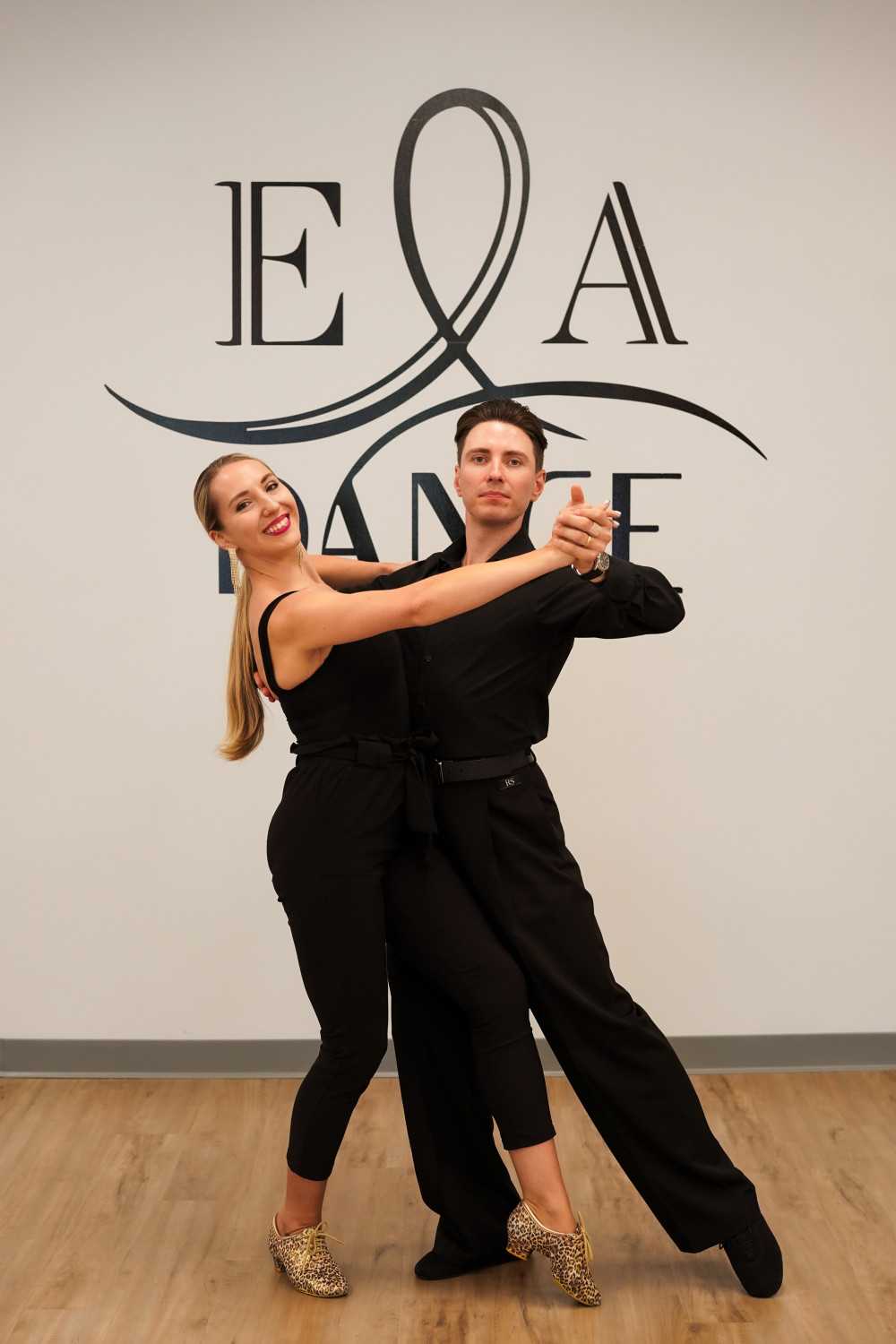
Viennese Waltz in Ocoee, Florida
The Viennese Waltz is a classic ballroom dance characterized by its fast tempo, rotational movement, and elegant figures. Danced to music in 3/4 time signature, it exudes grace and sophistication, making it a popular choice for formal events and ballroom competitions.
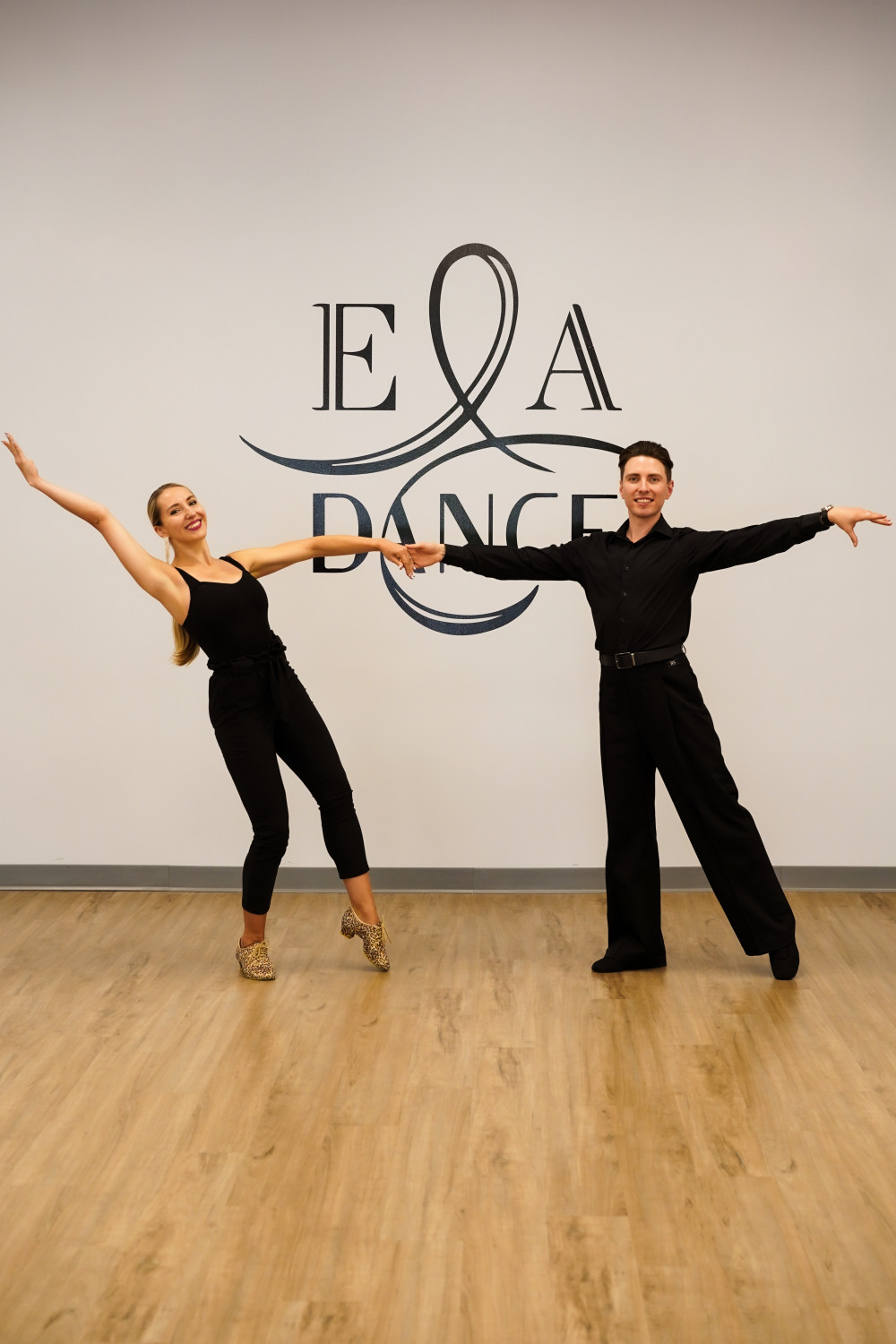
Waltz in Ocoee, Florida
The waltz is a graceful ballroom dance characterized by its smooth, flowing movements and 3/4 time signature. It exudes elegance, romance, and timeless appeal, making it a popular choice for formal events and weddings.
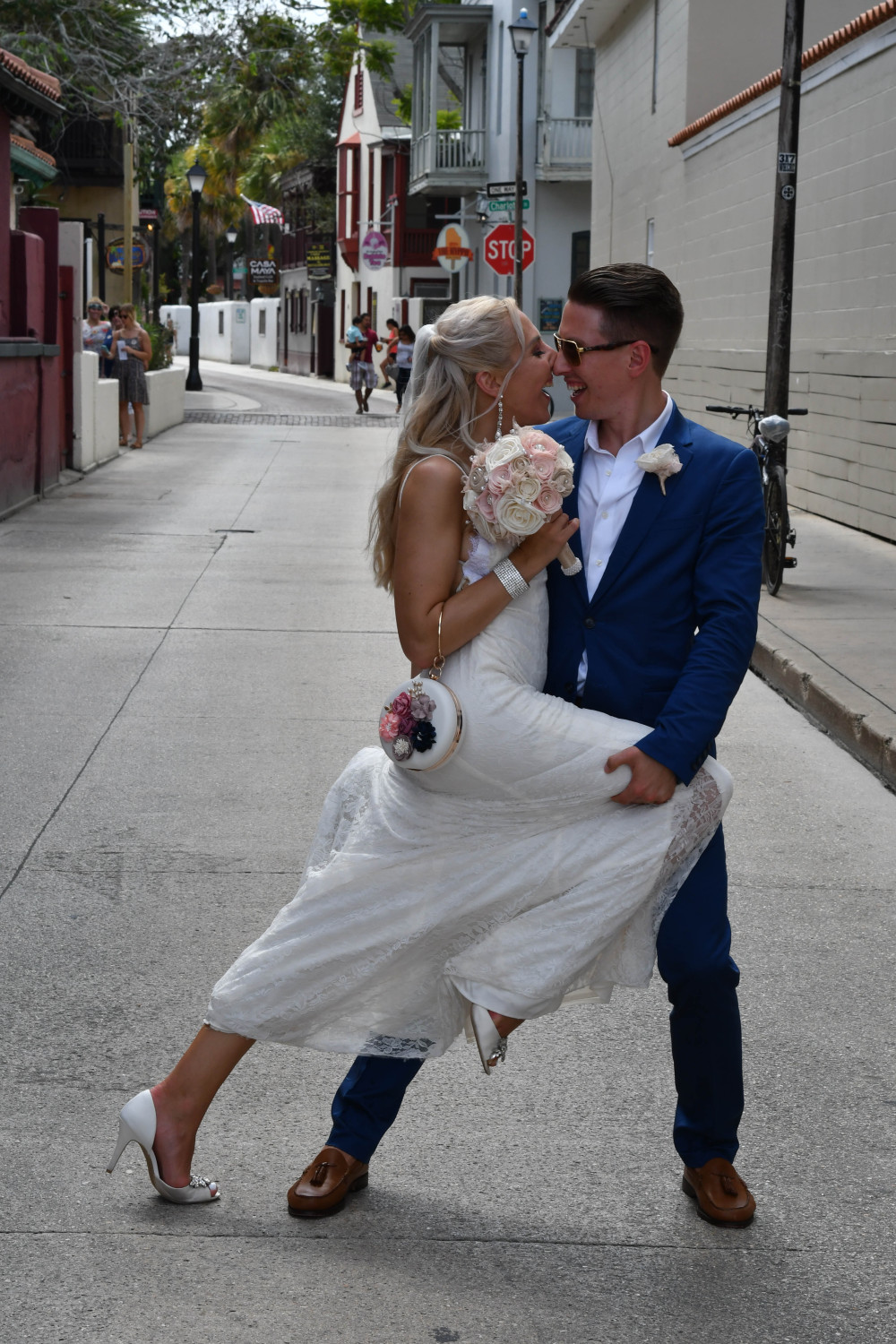
Wedding Dance Choreography in Ocoee, Florida
Wedding dance choreography is a personalized and memorable dance routine created for the bride and groom to perform during their wedding reception. With guidance from a dance instructor or choreographer, the couple learns a custom routine tailored to their abilities and preferences.
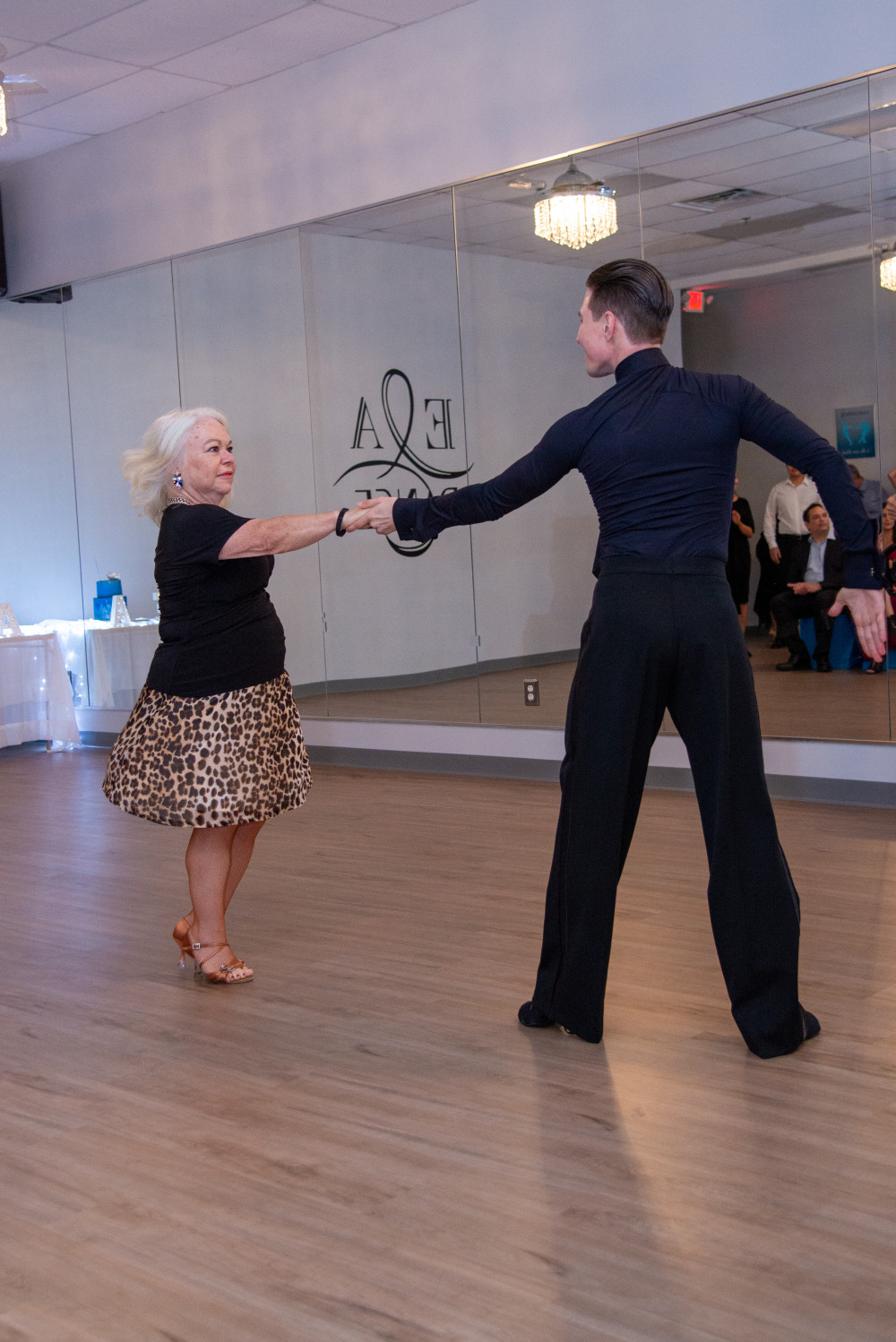
West Coast Swing in Ocoee, Florida
West Coast Swing is a modern partner dance originating from the United States. It's characterized by its elastic connection between partners, smooth footwork, and versatility in music selection. With its improvisational nature and adaptability, West Coast Swing has gained popularity both socially and competitively.